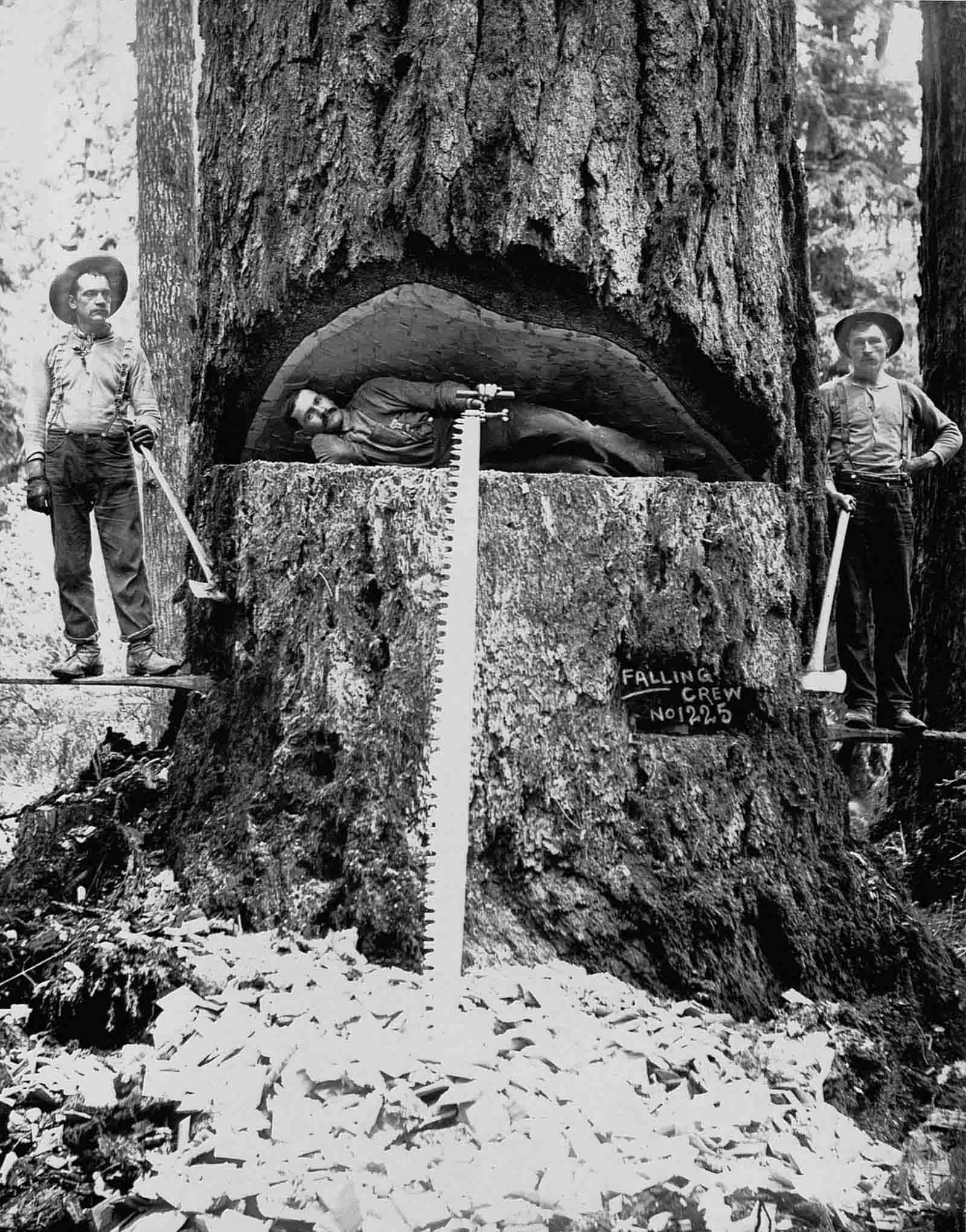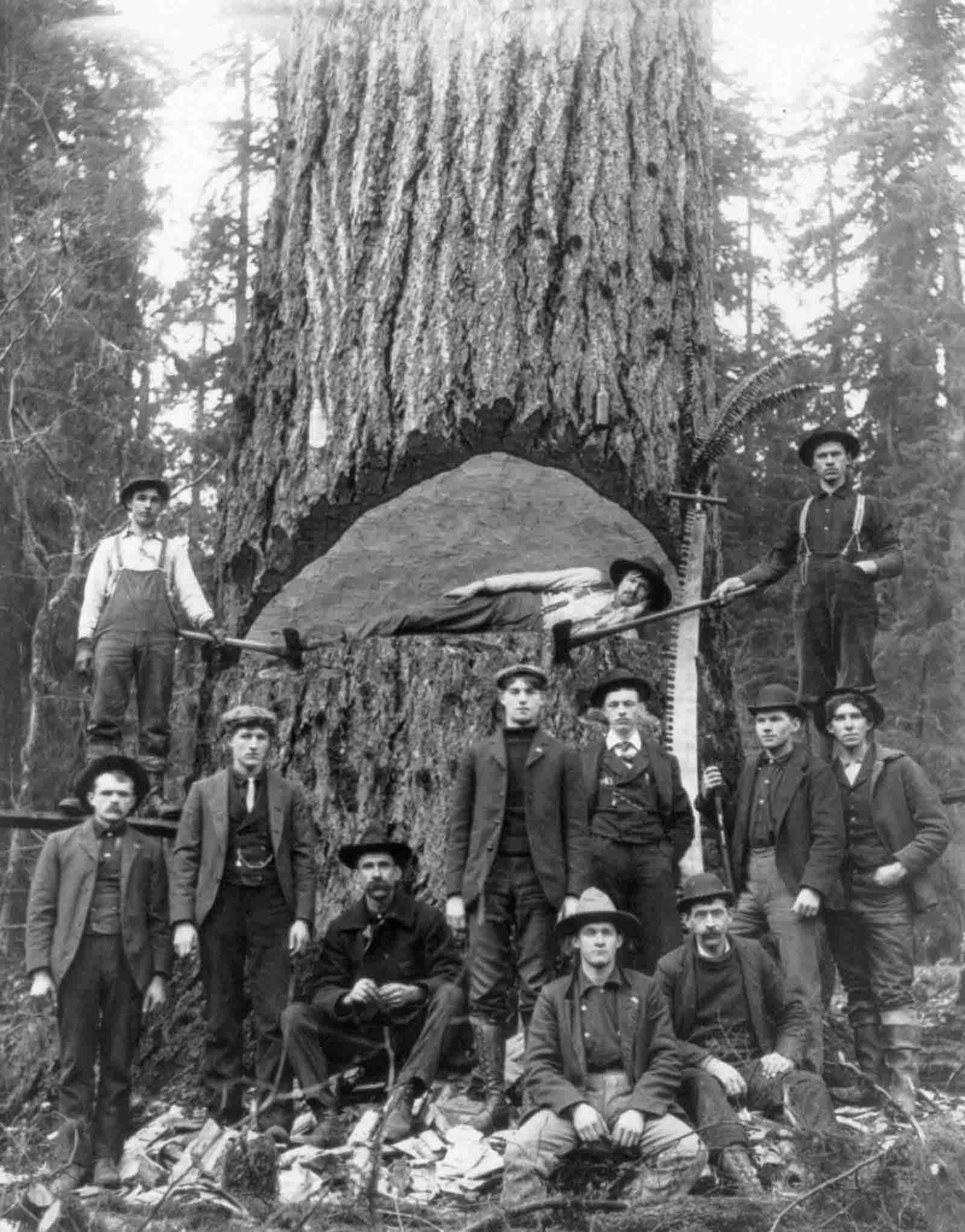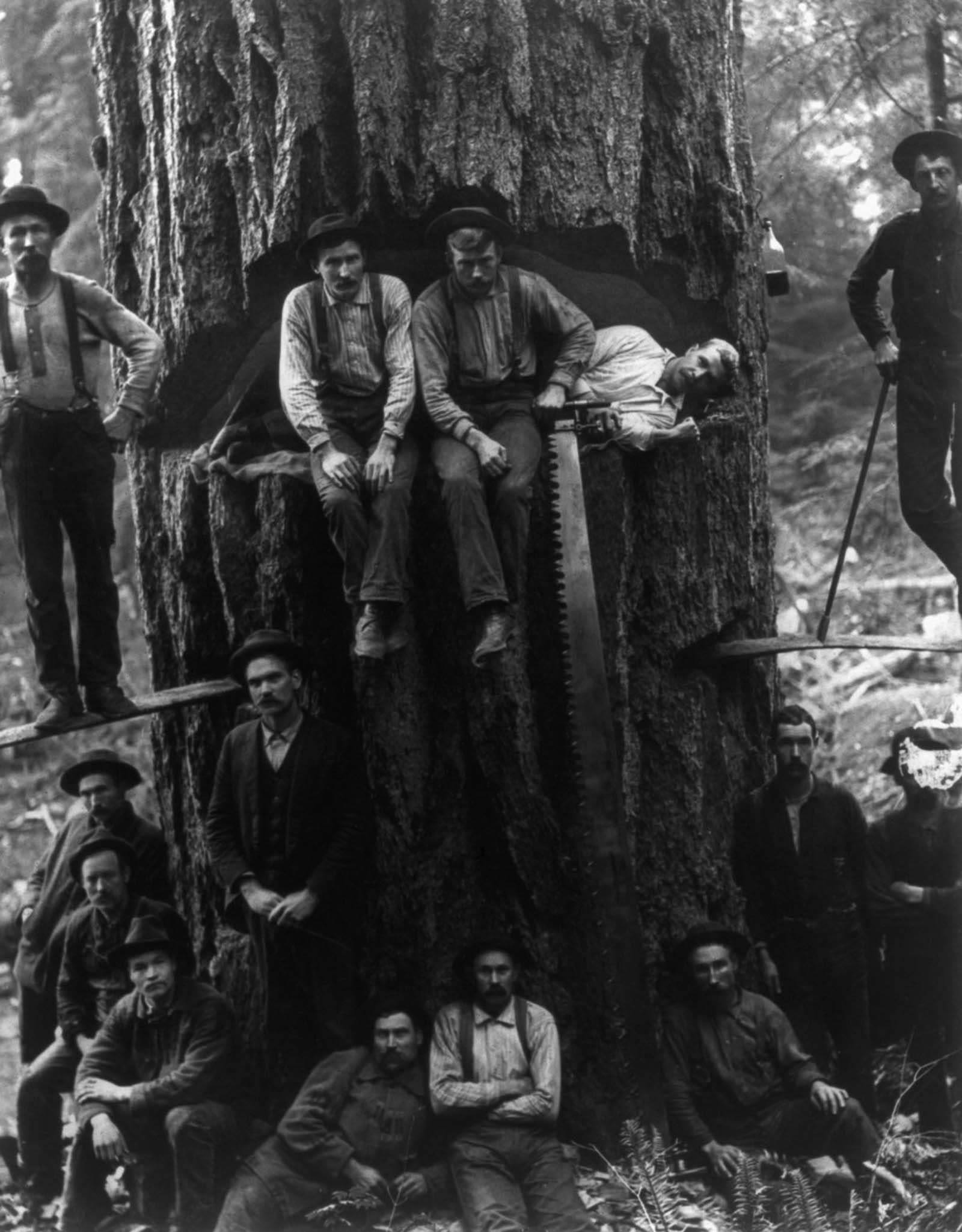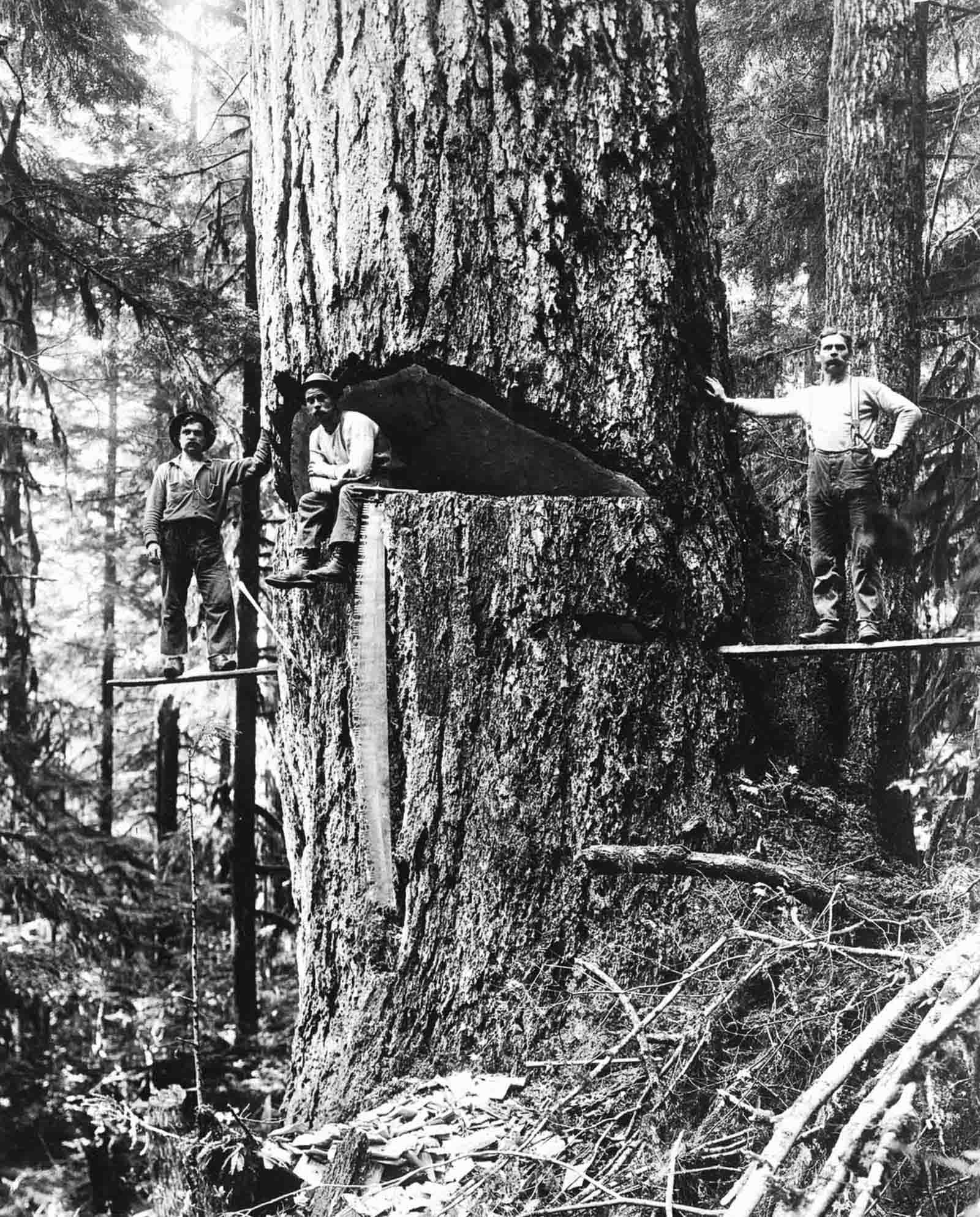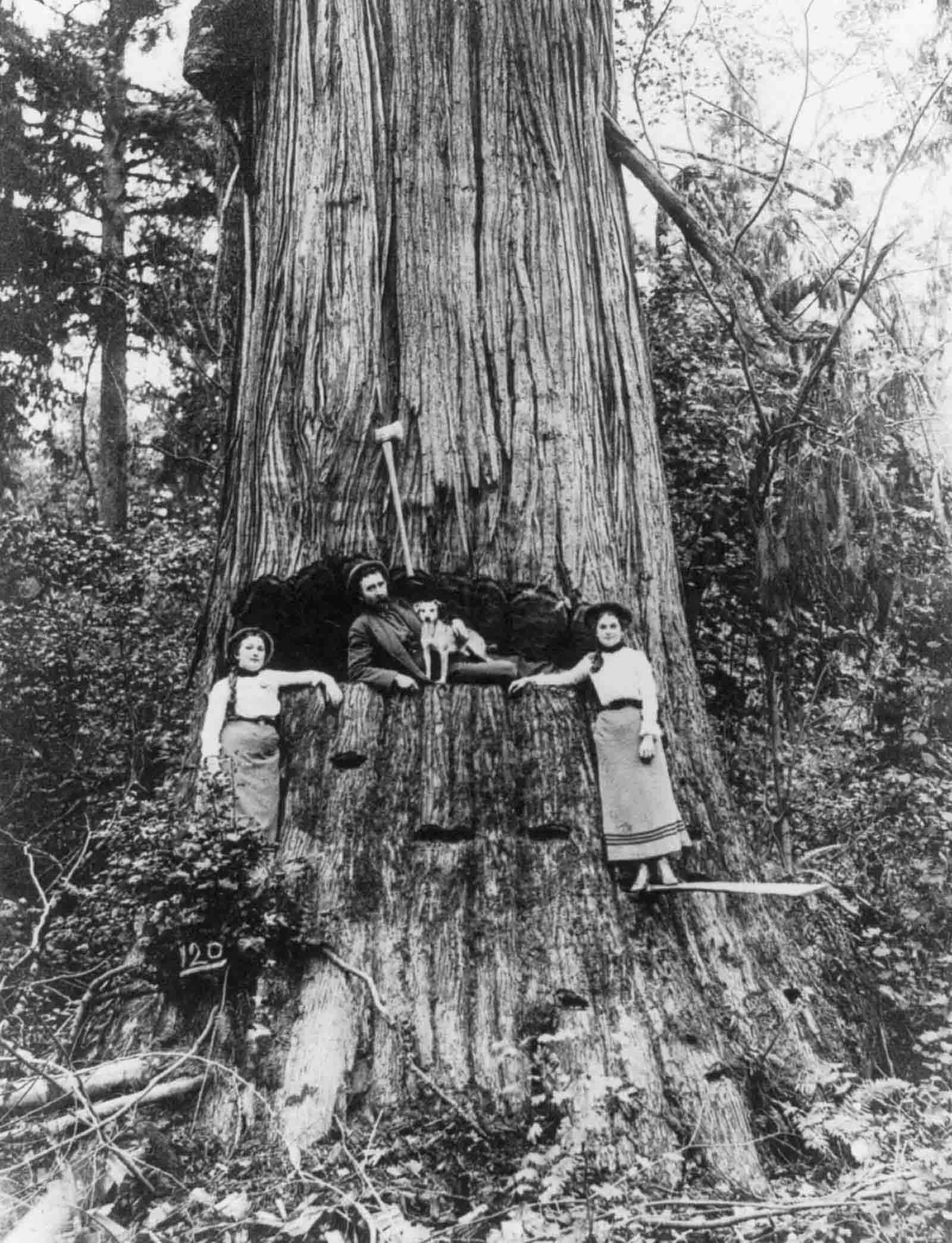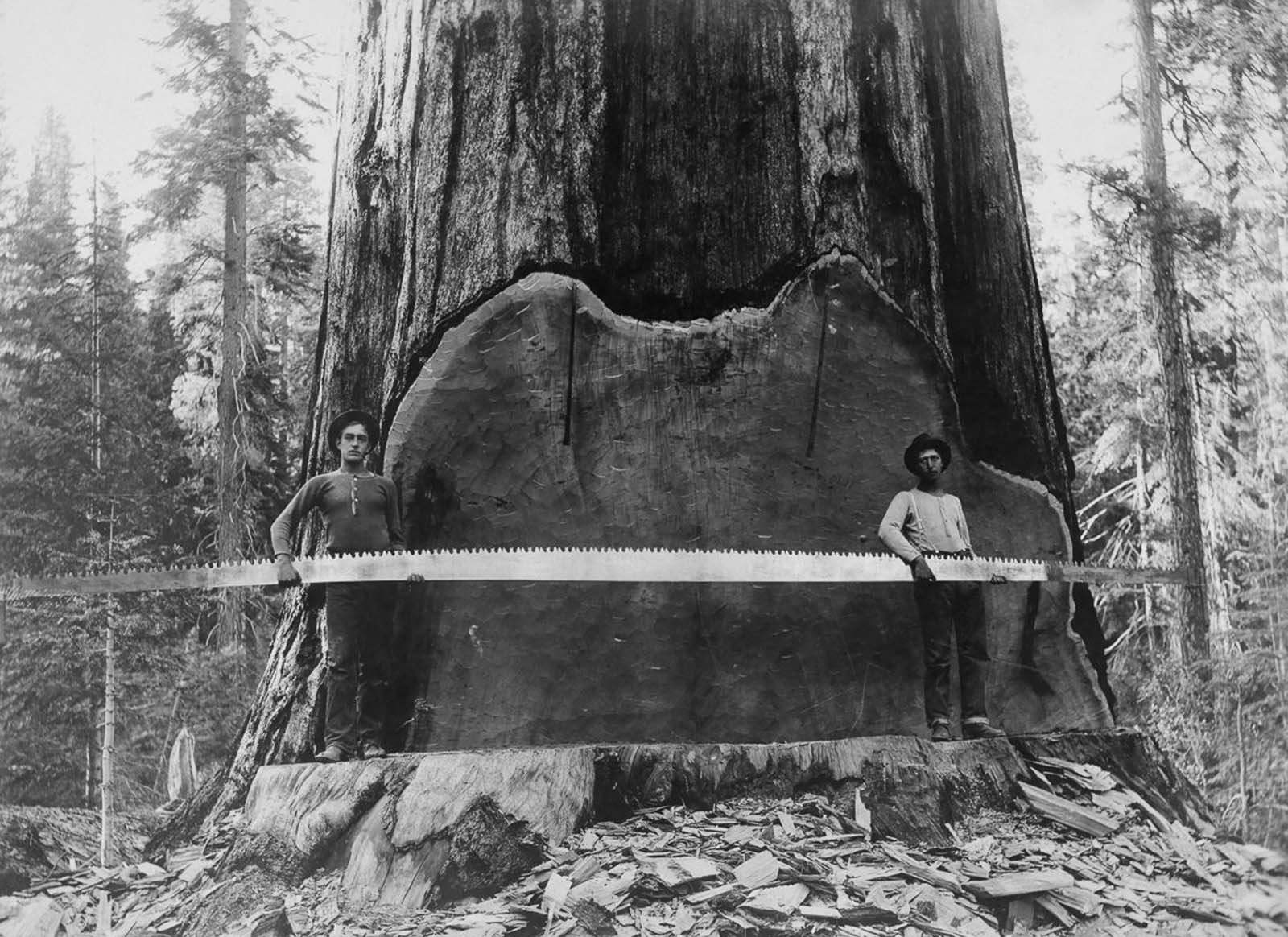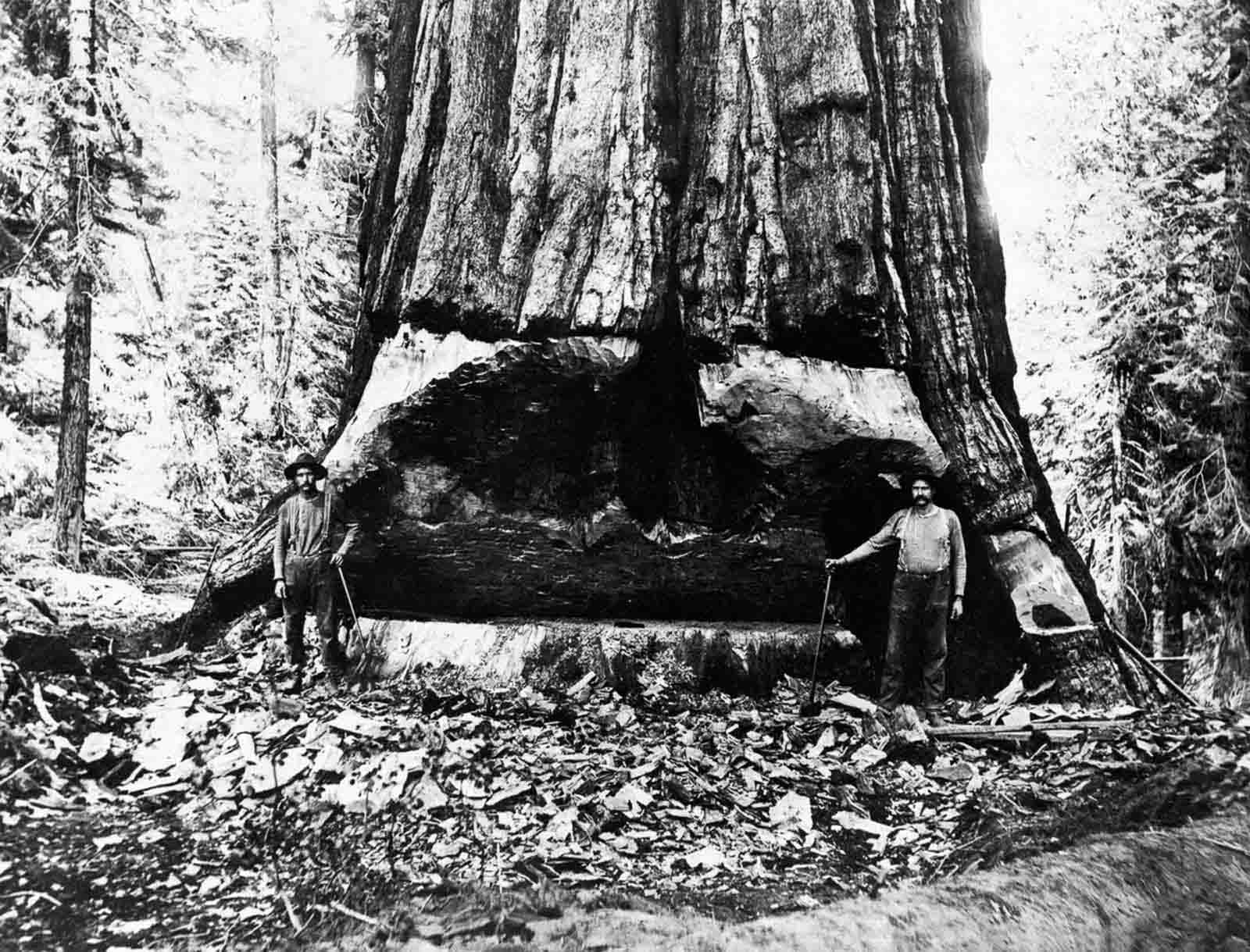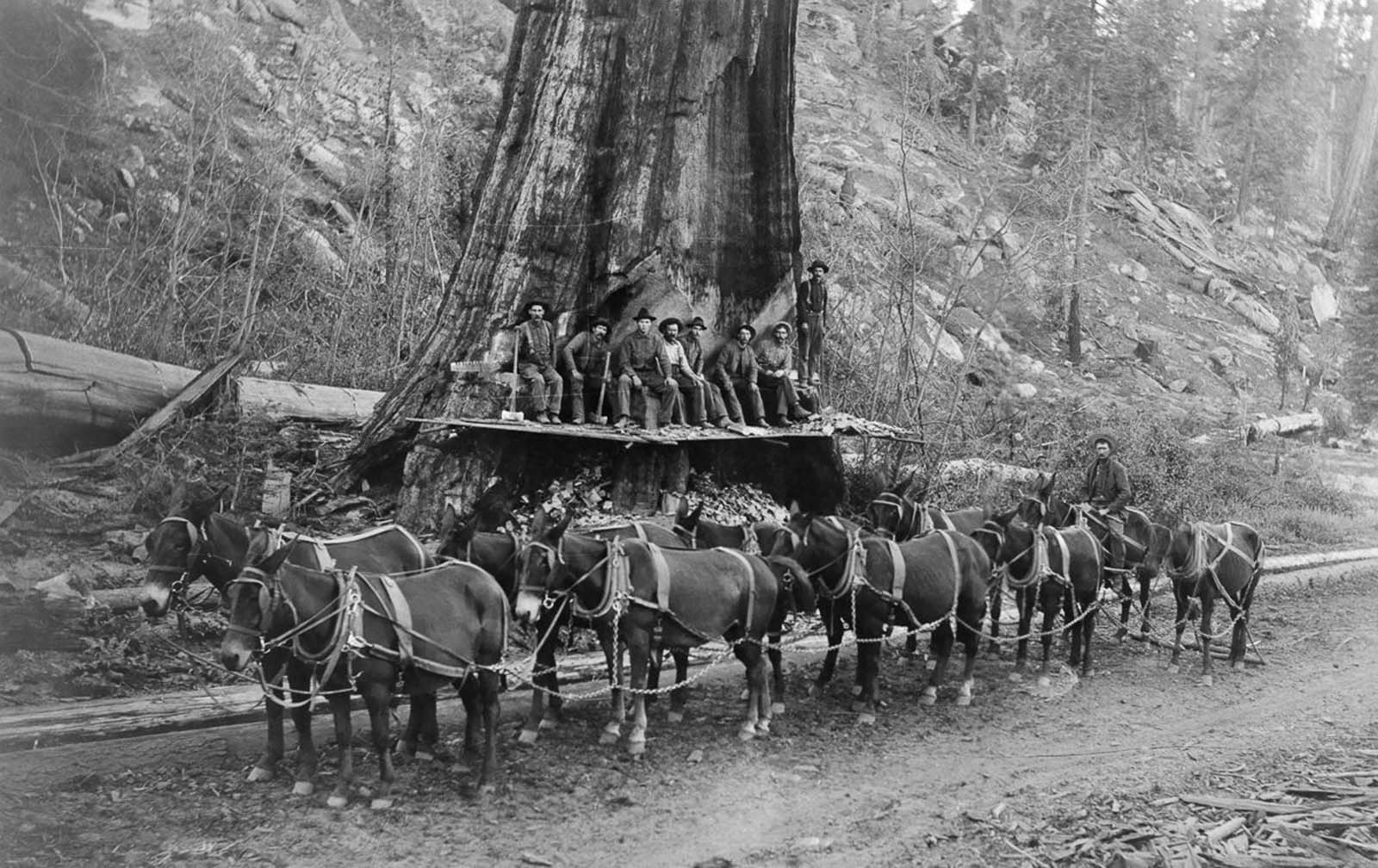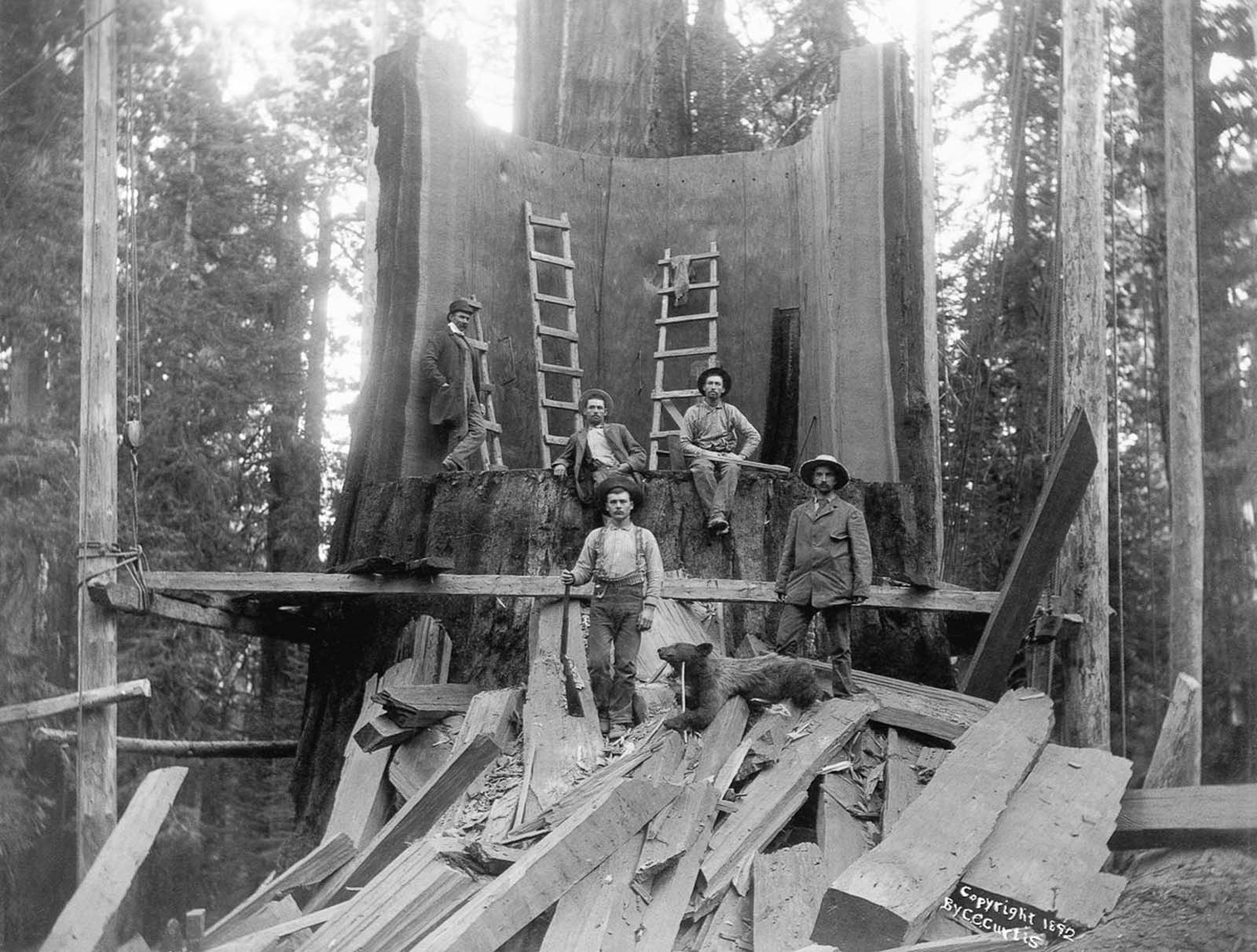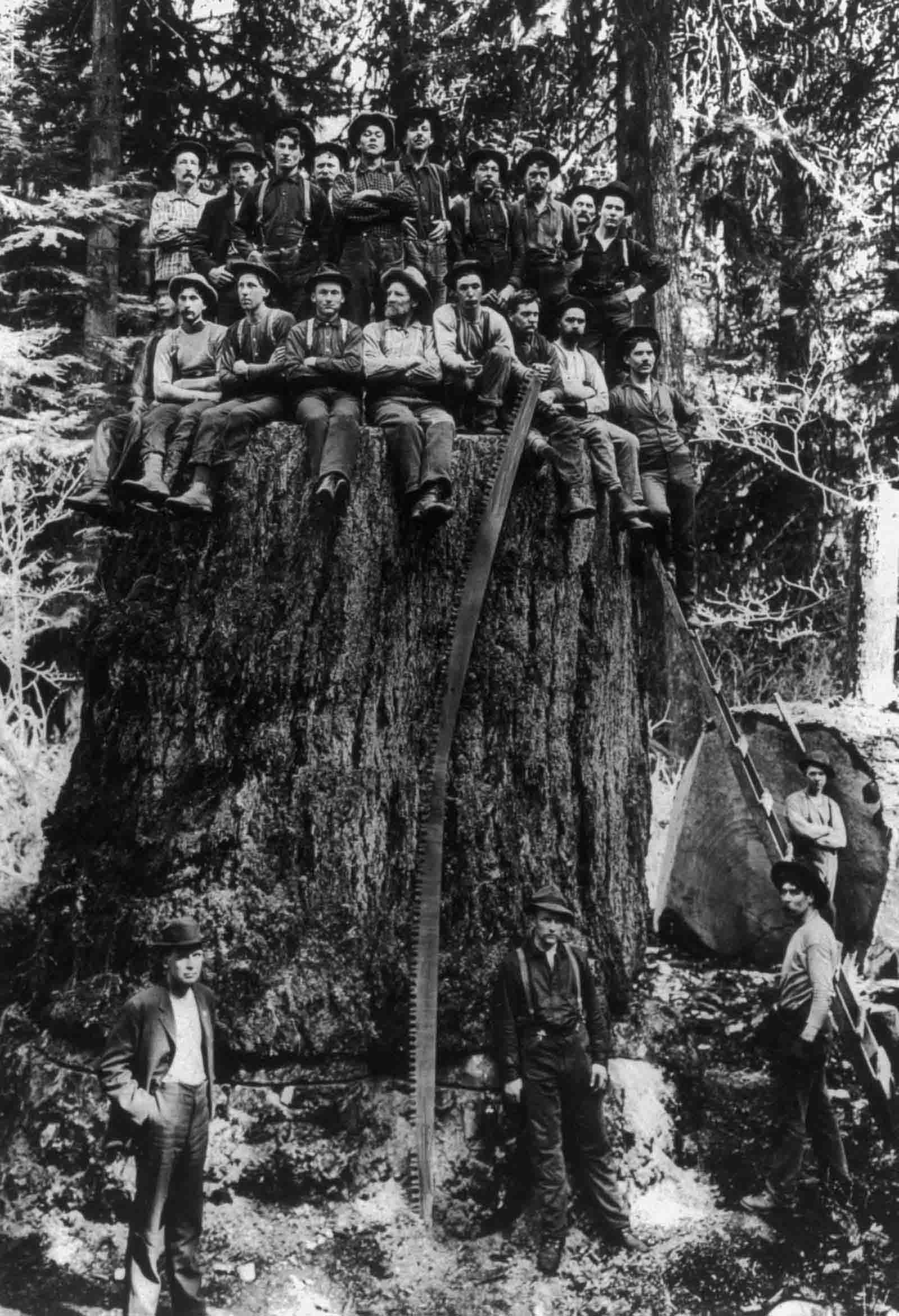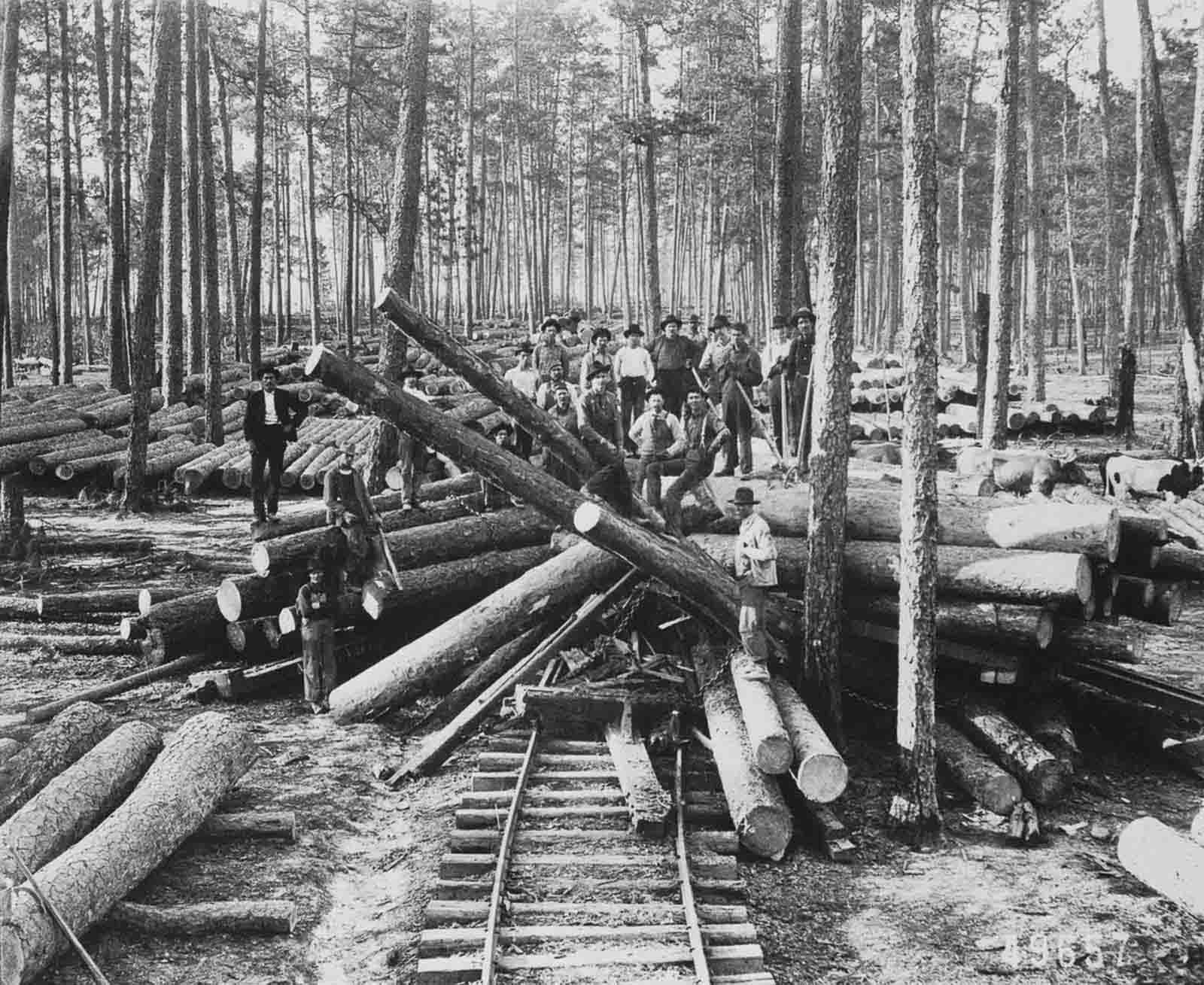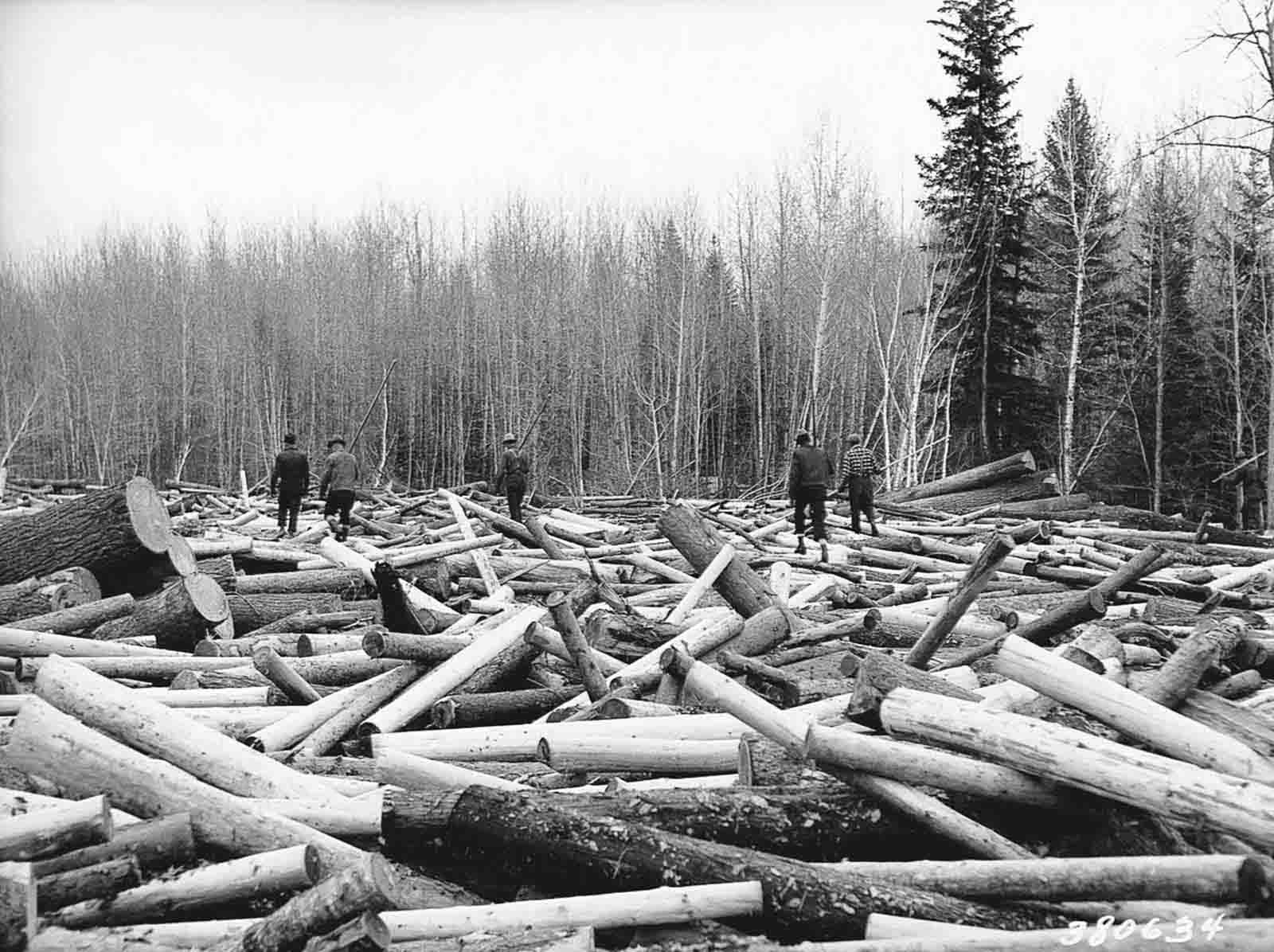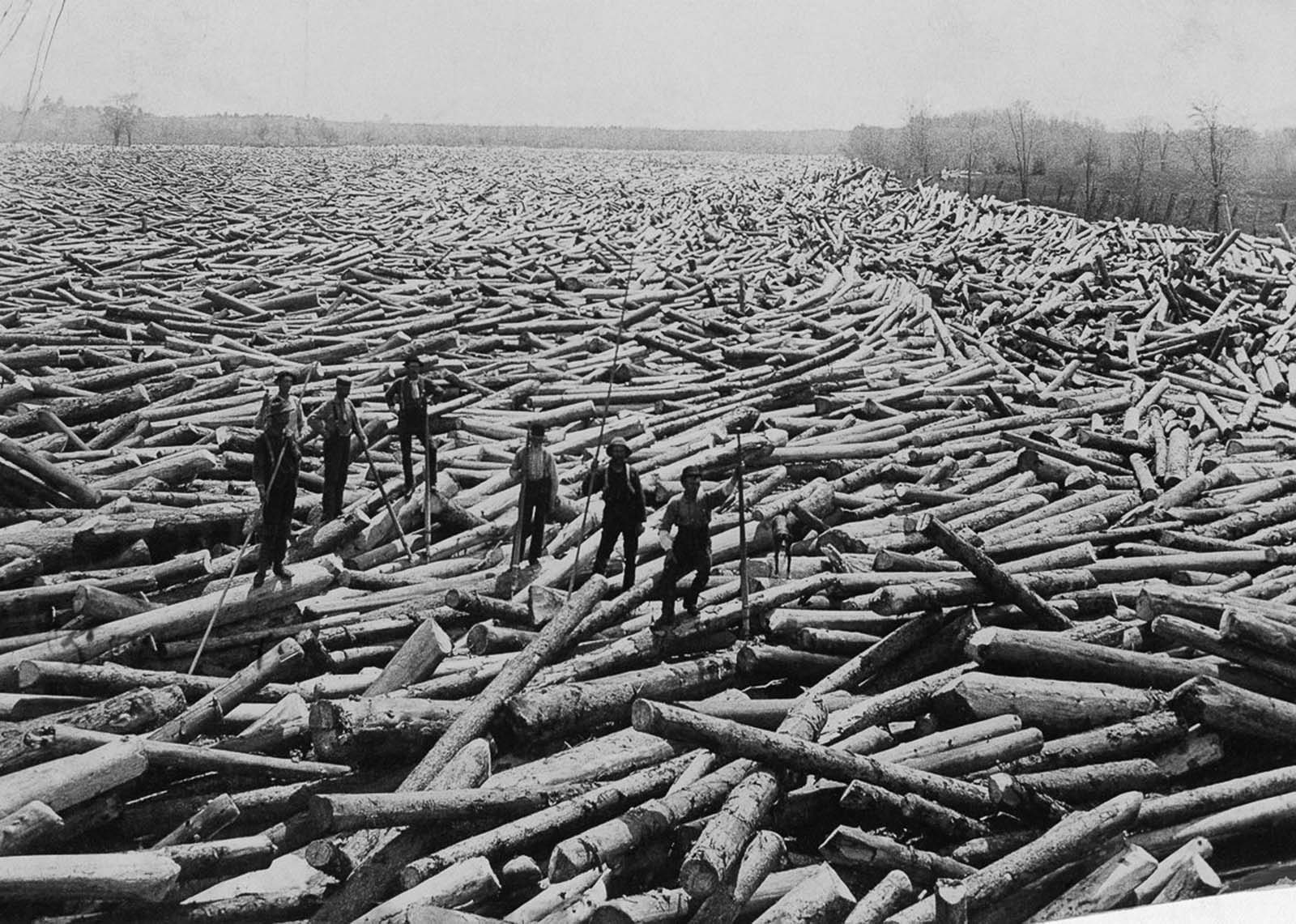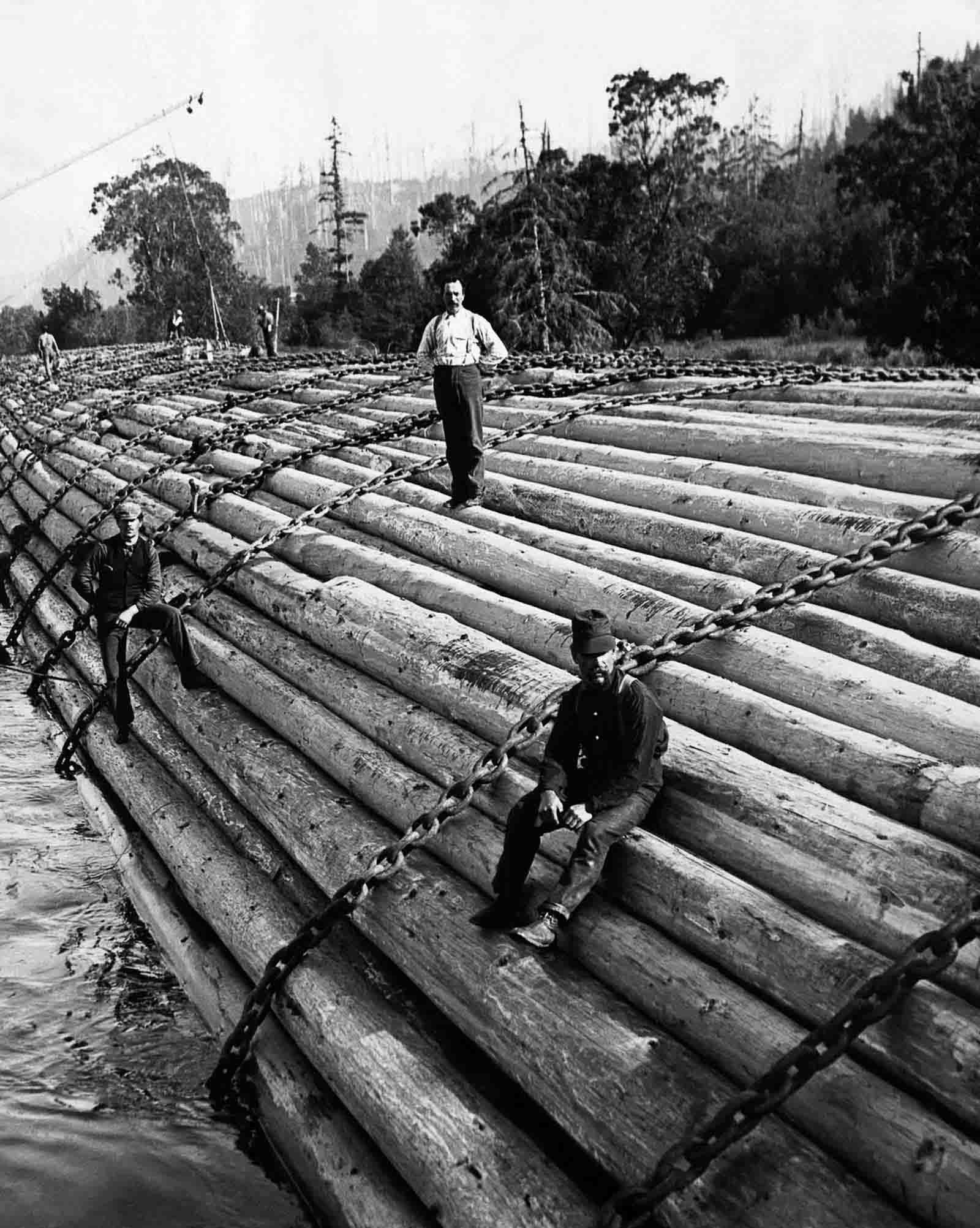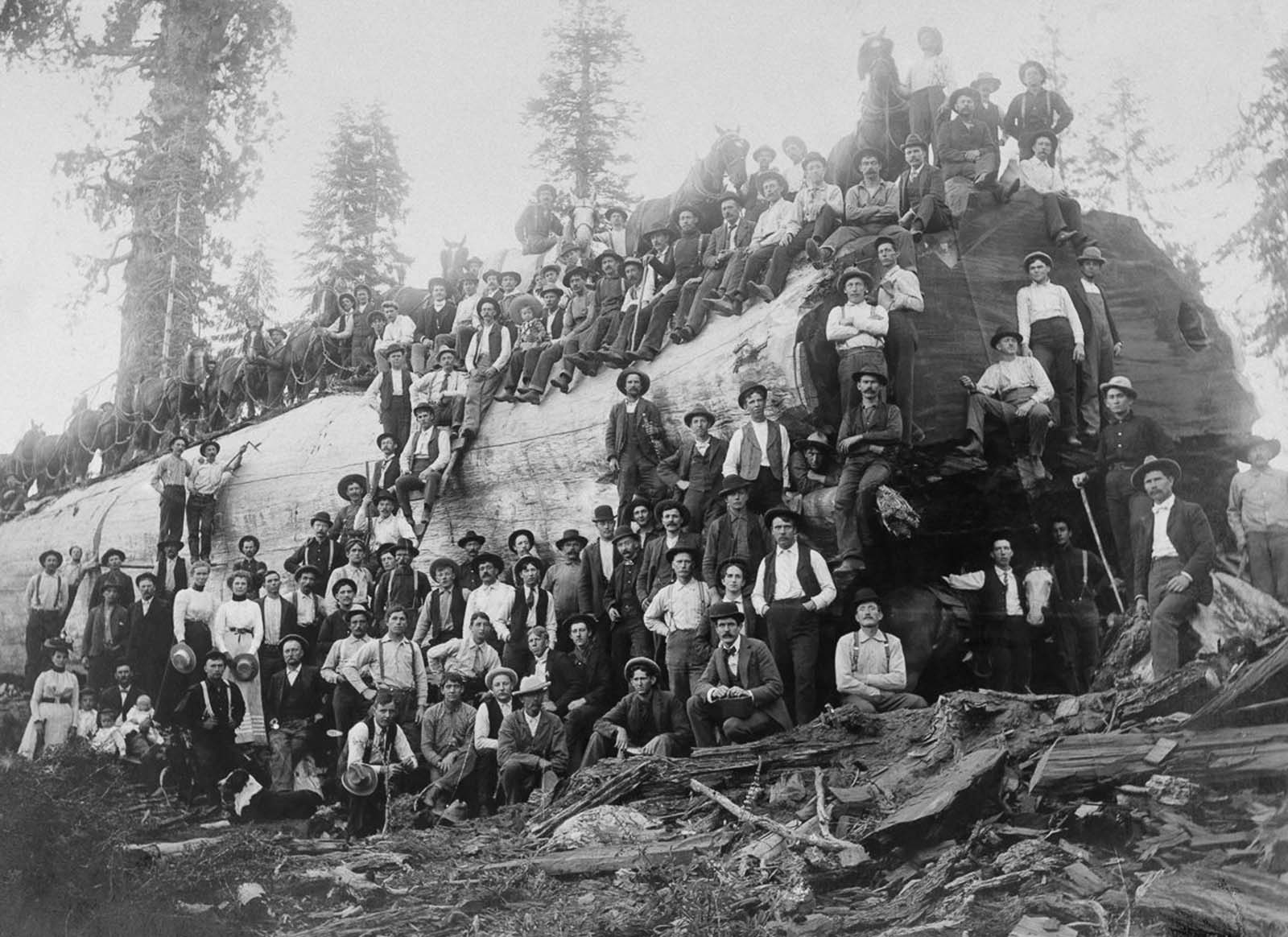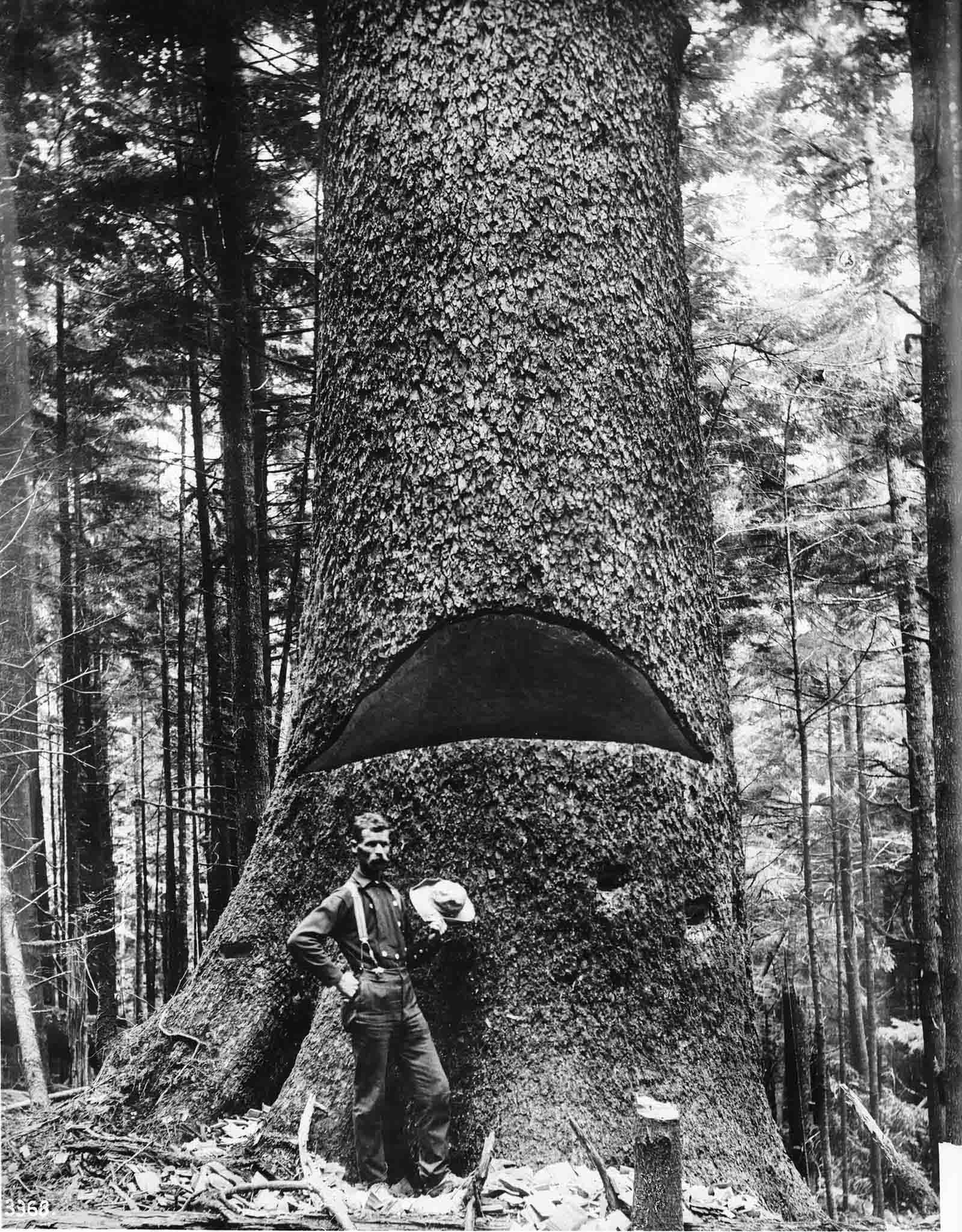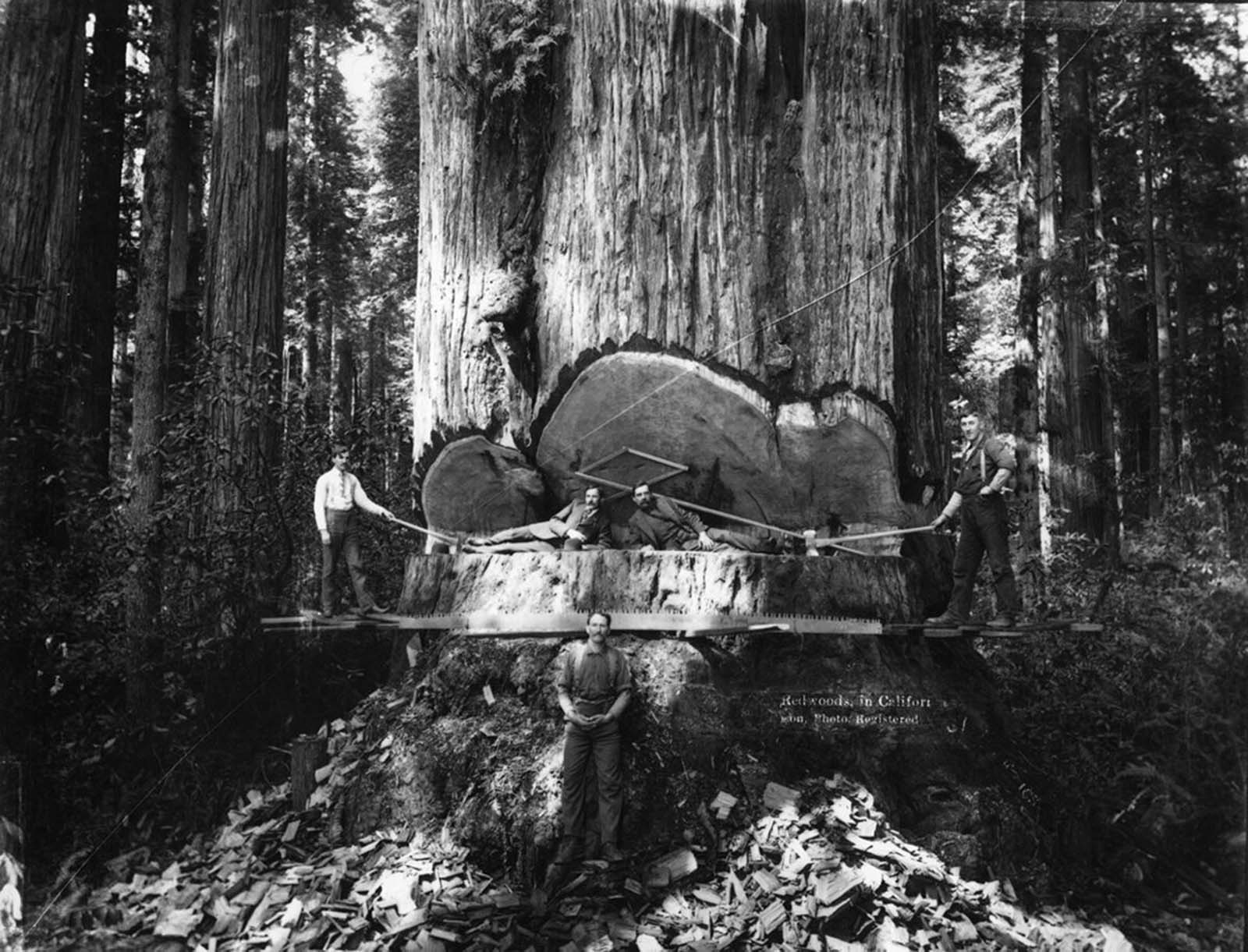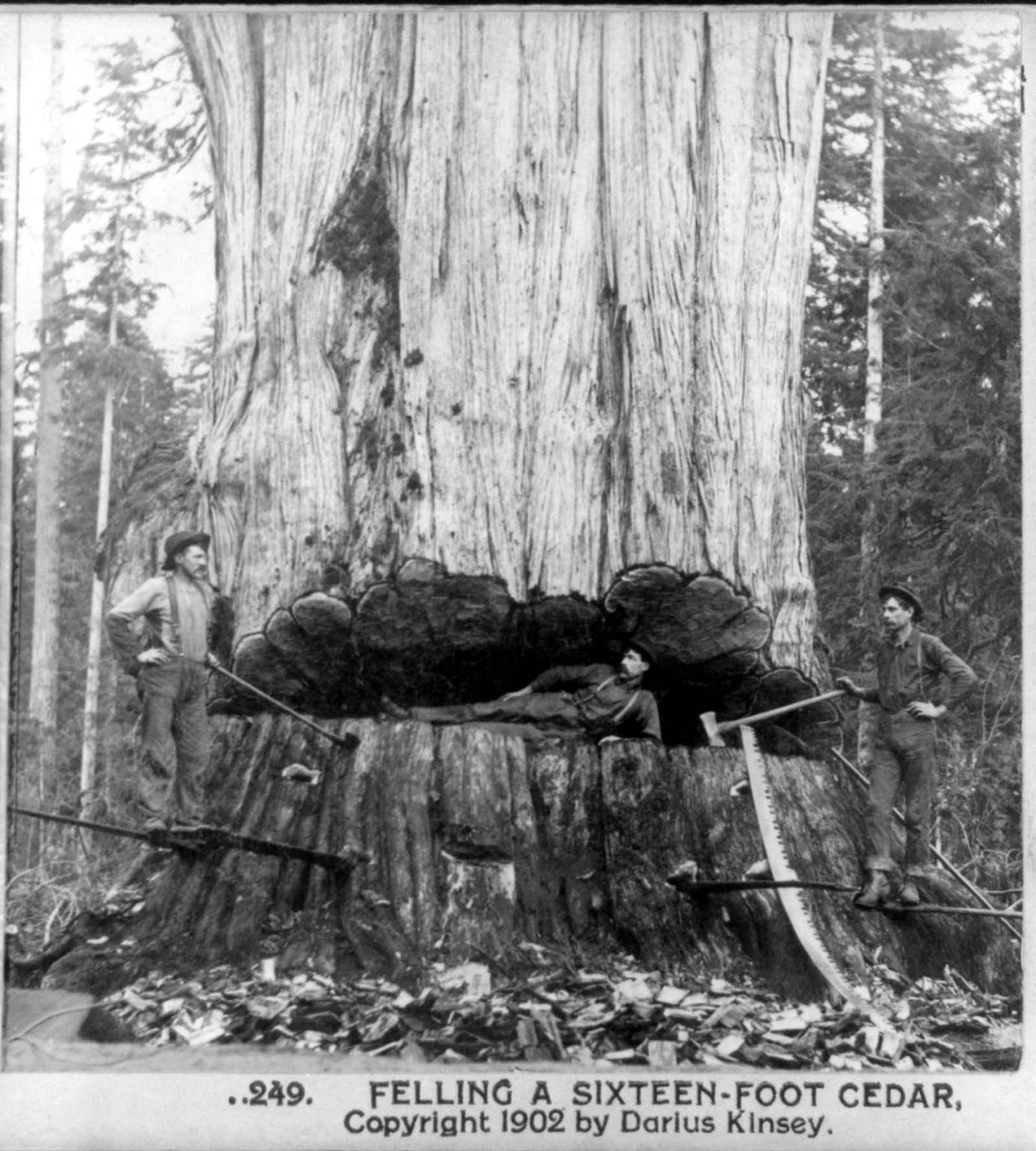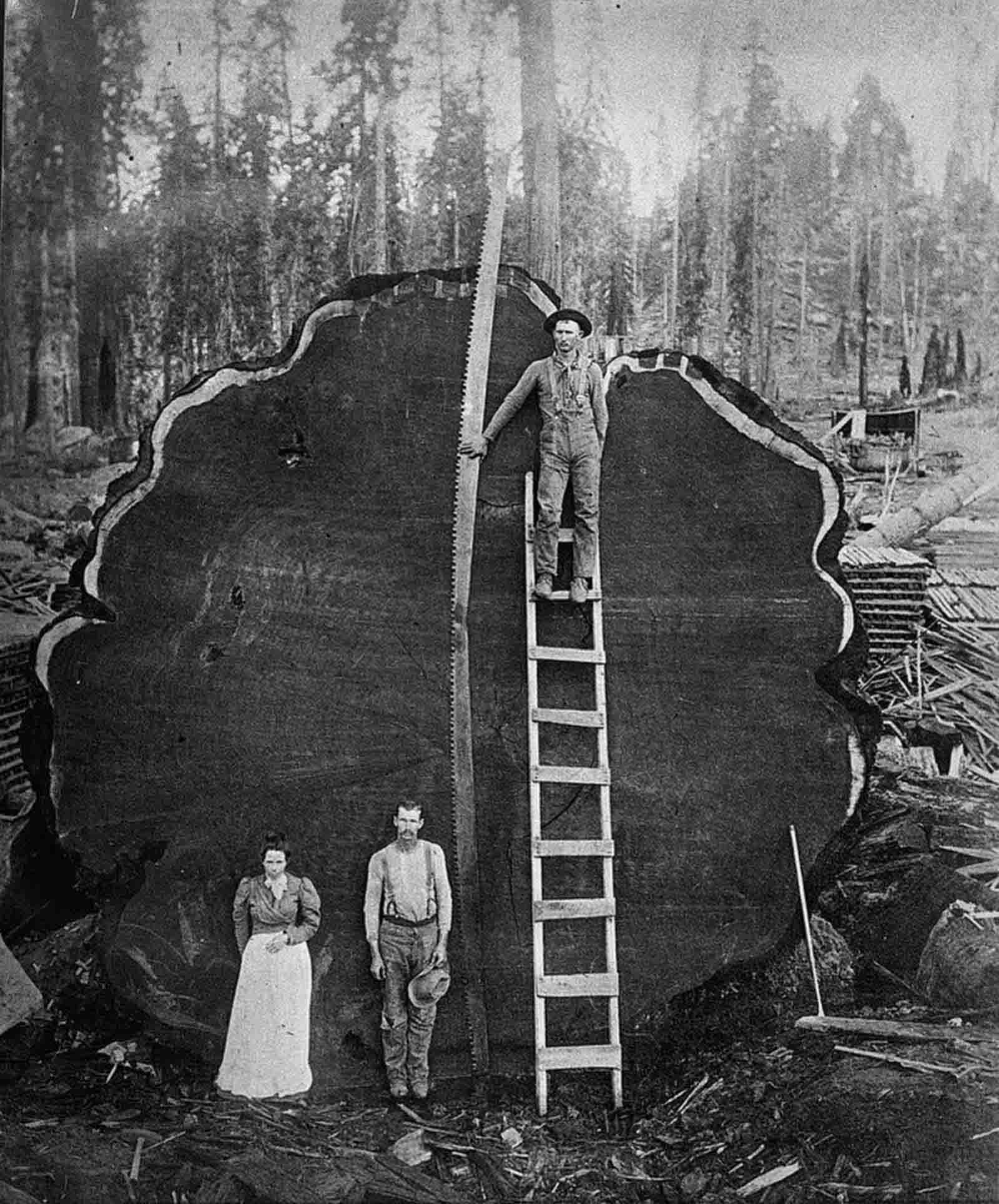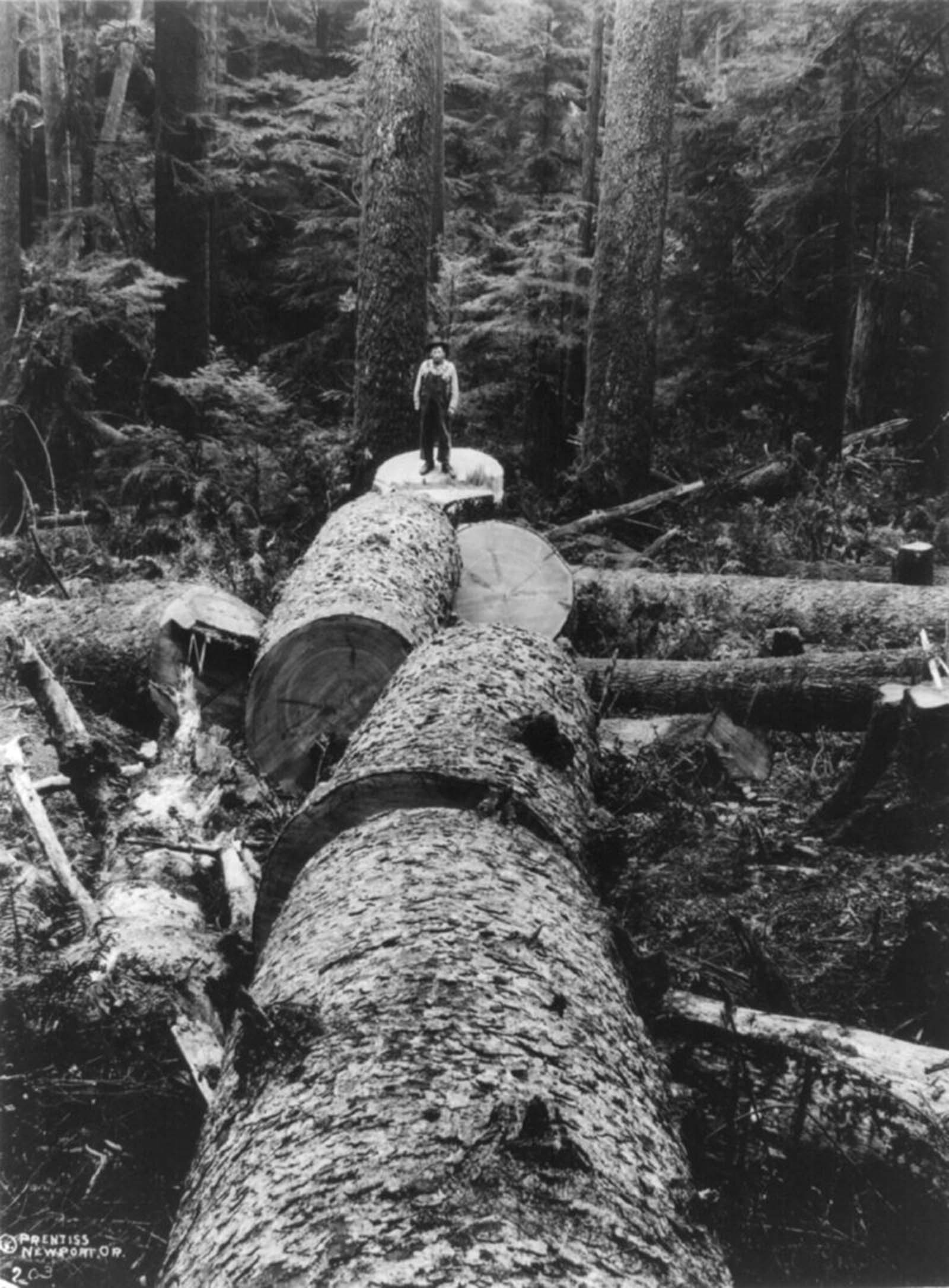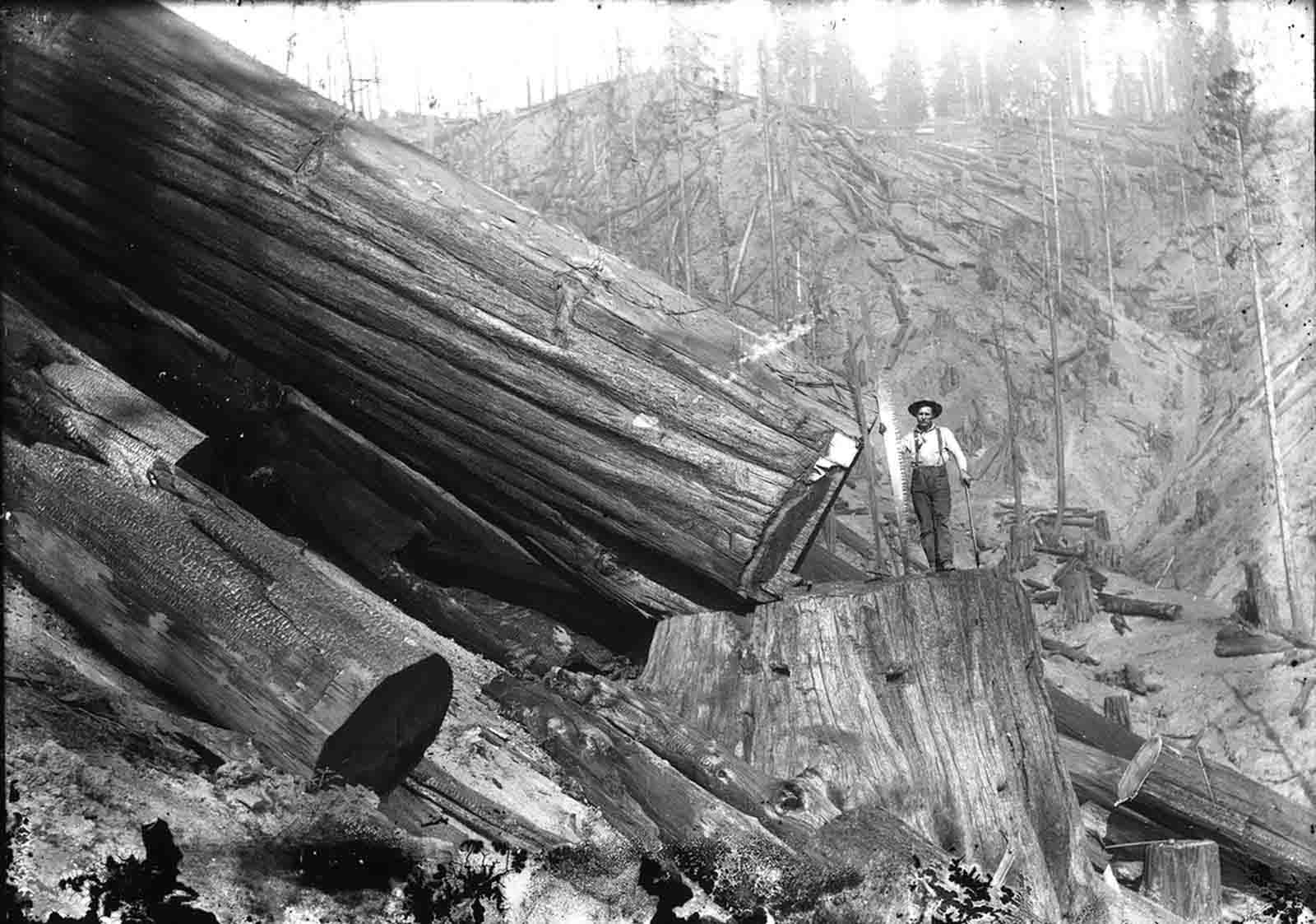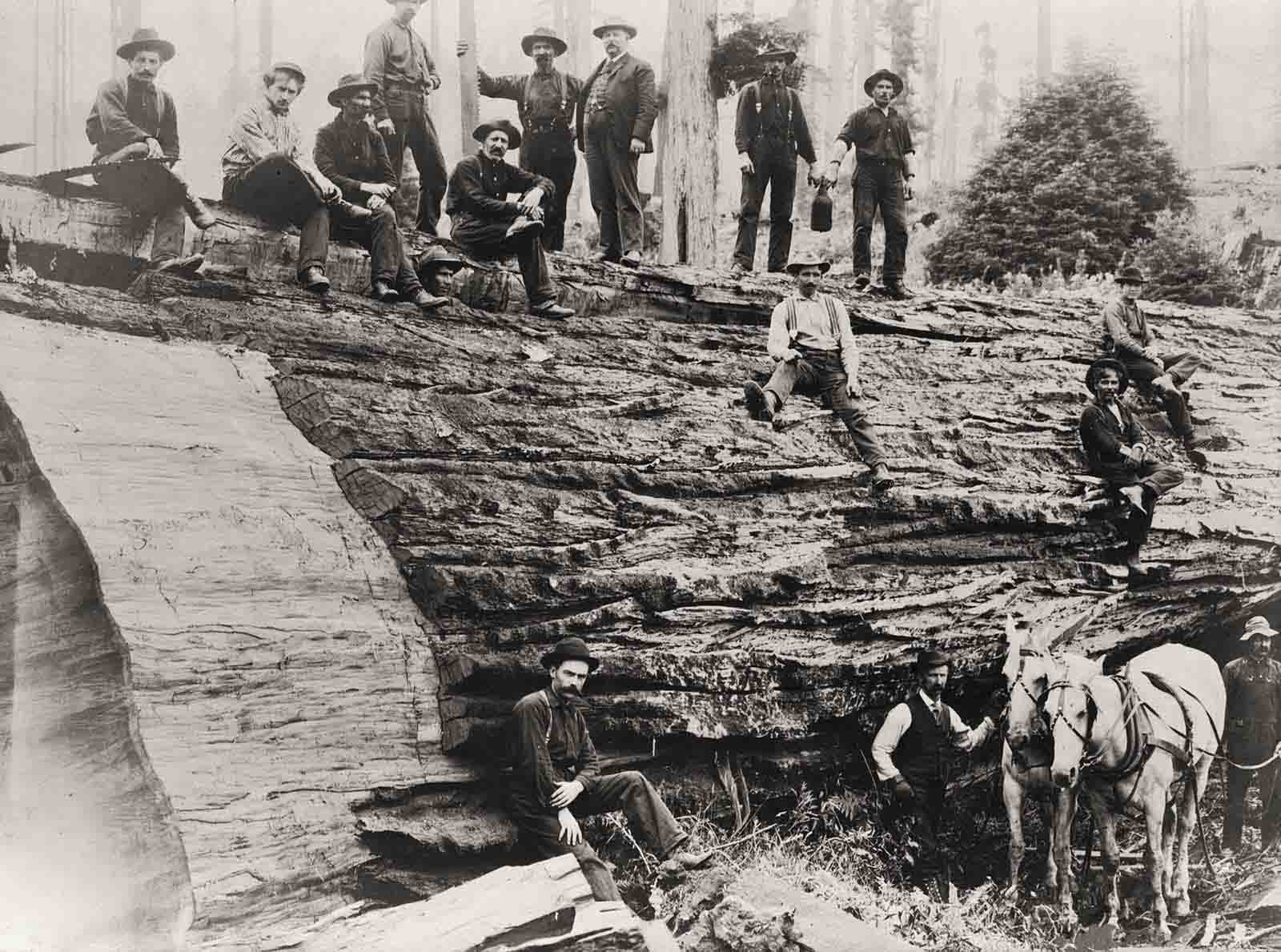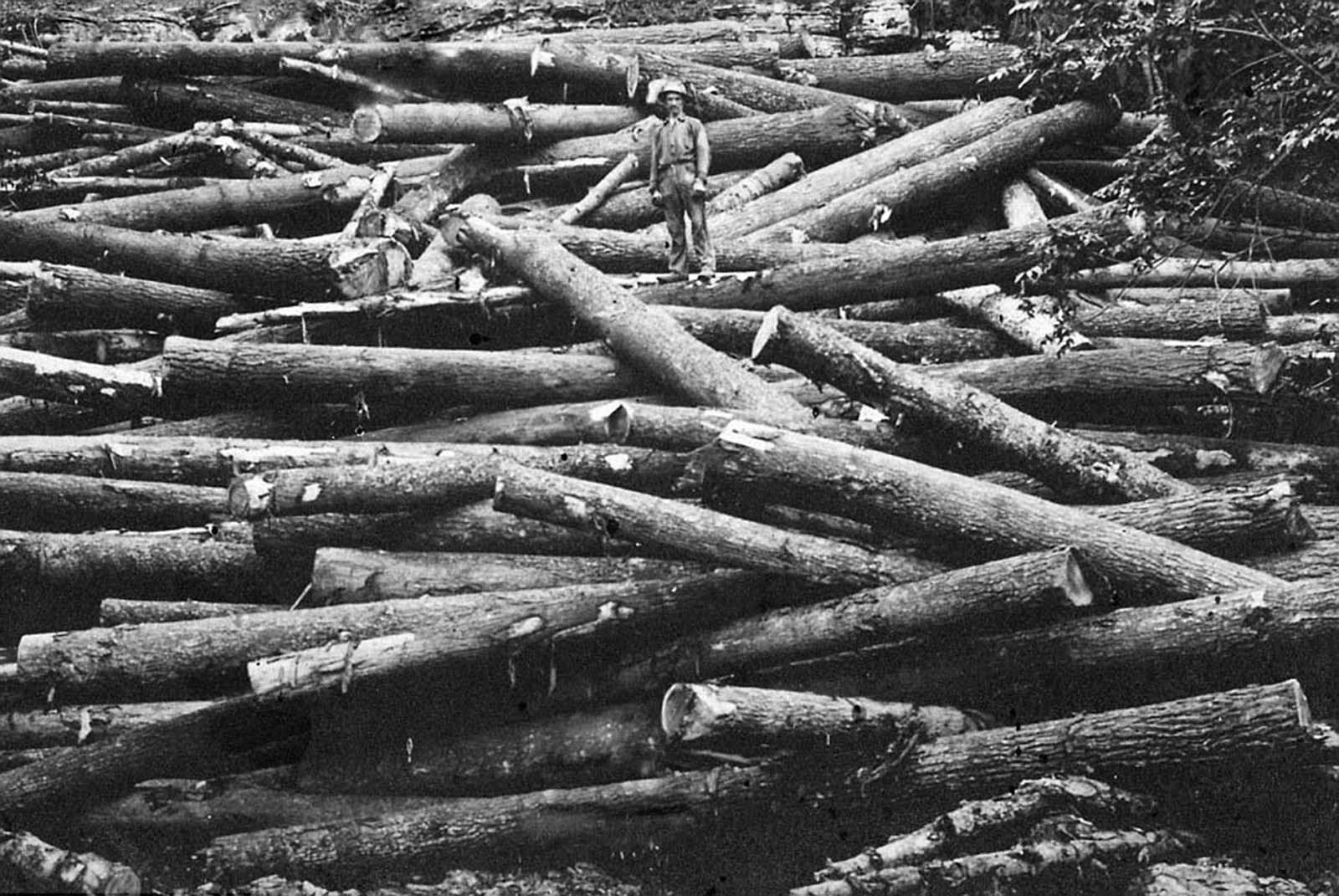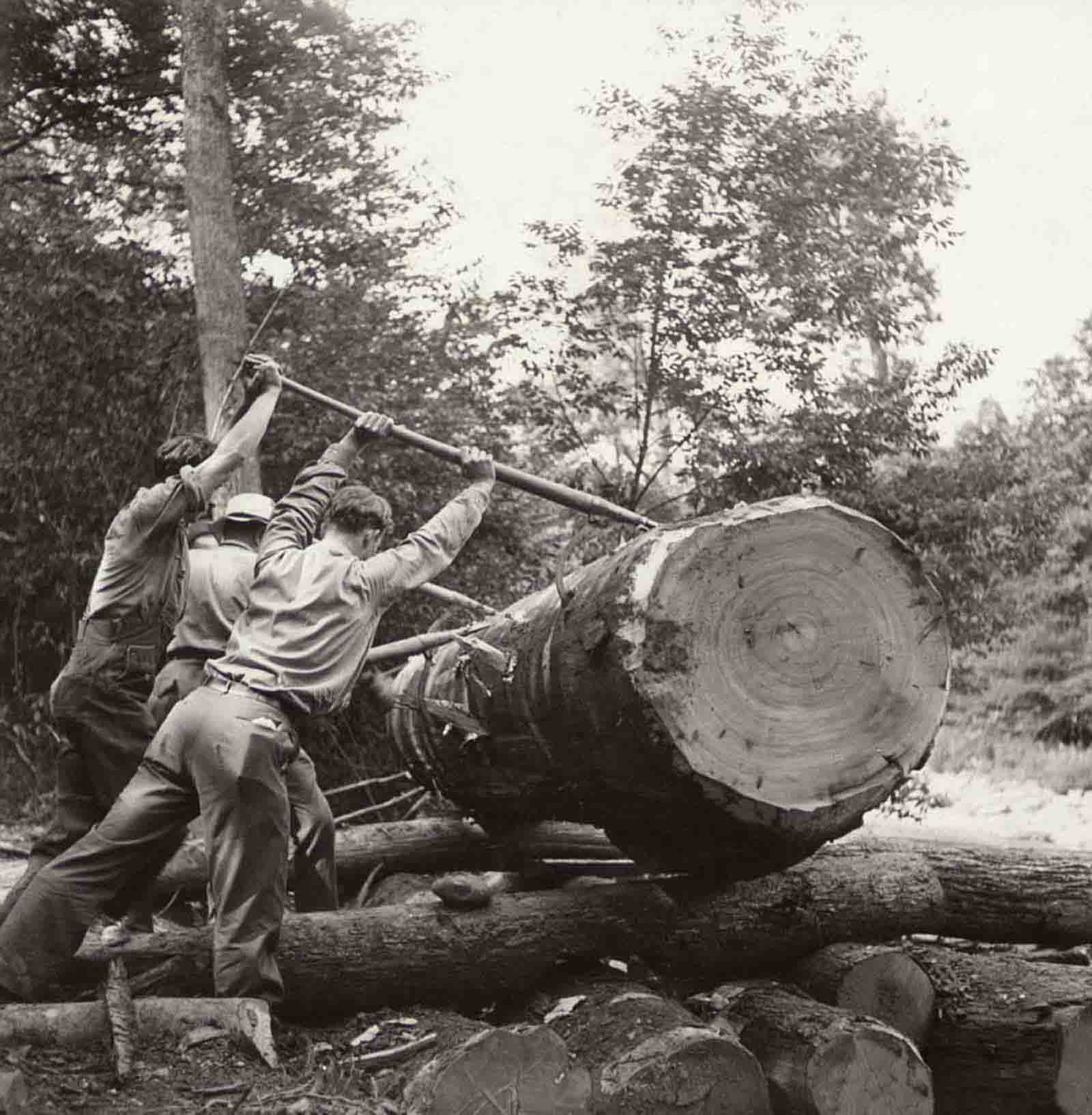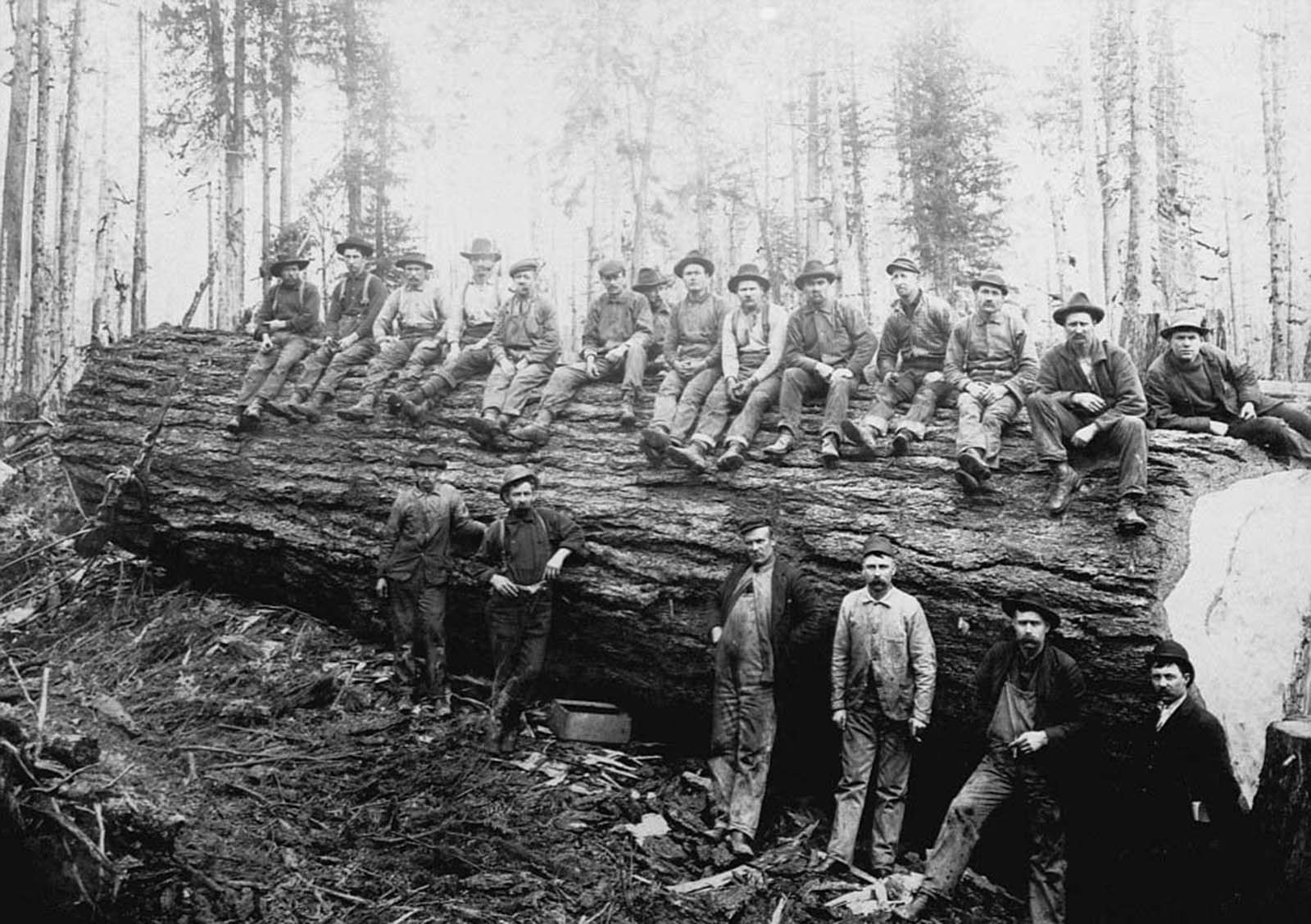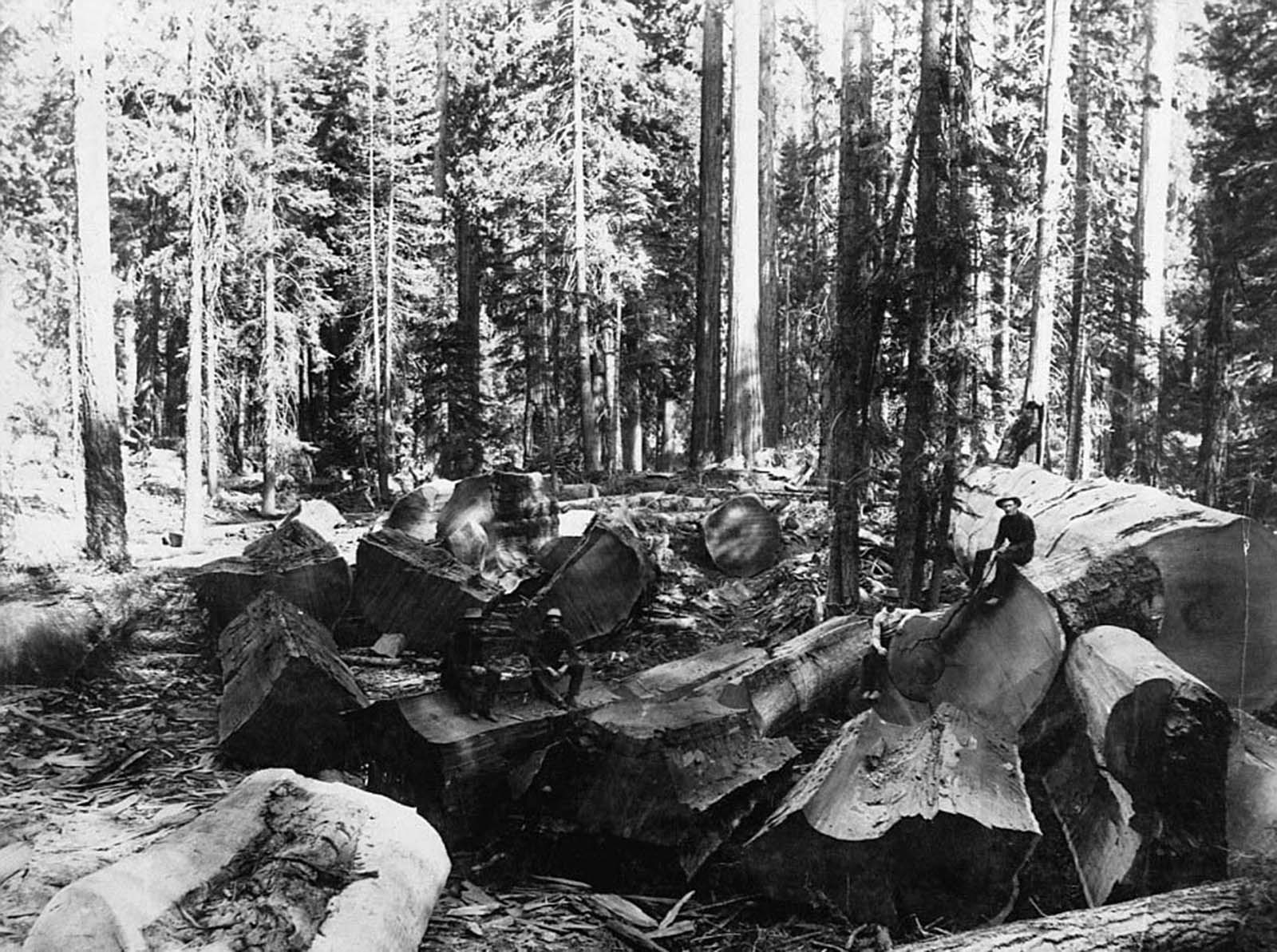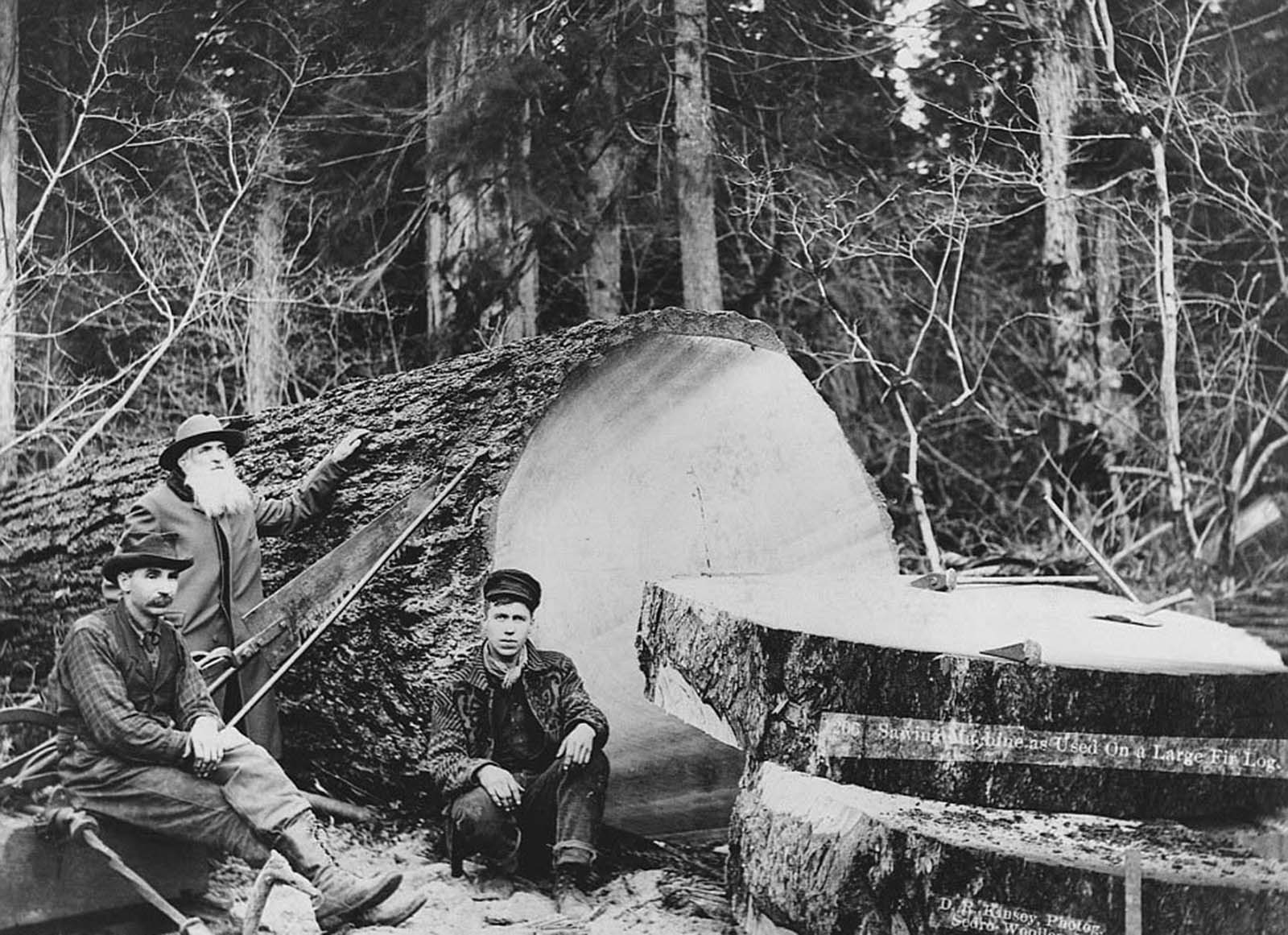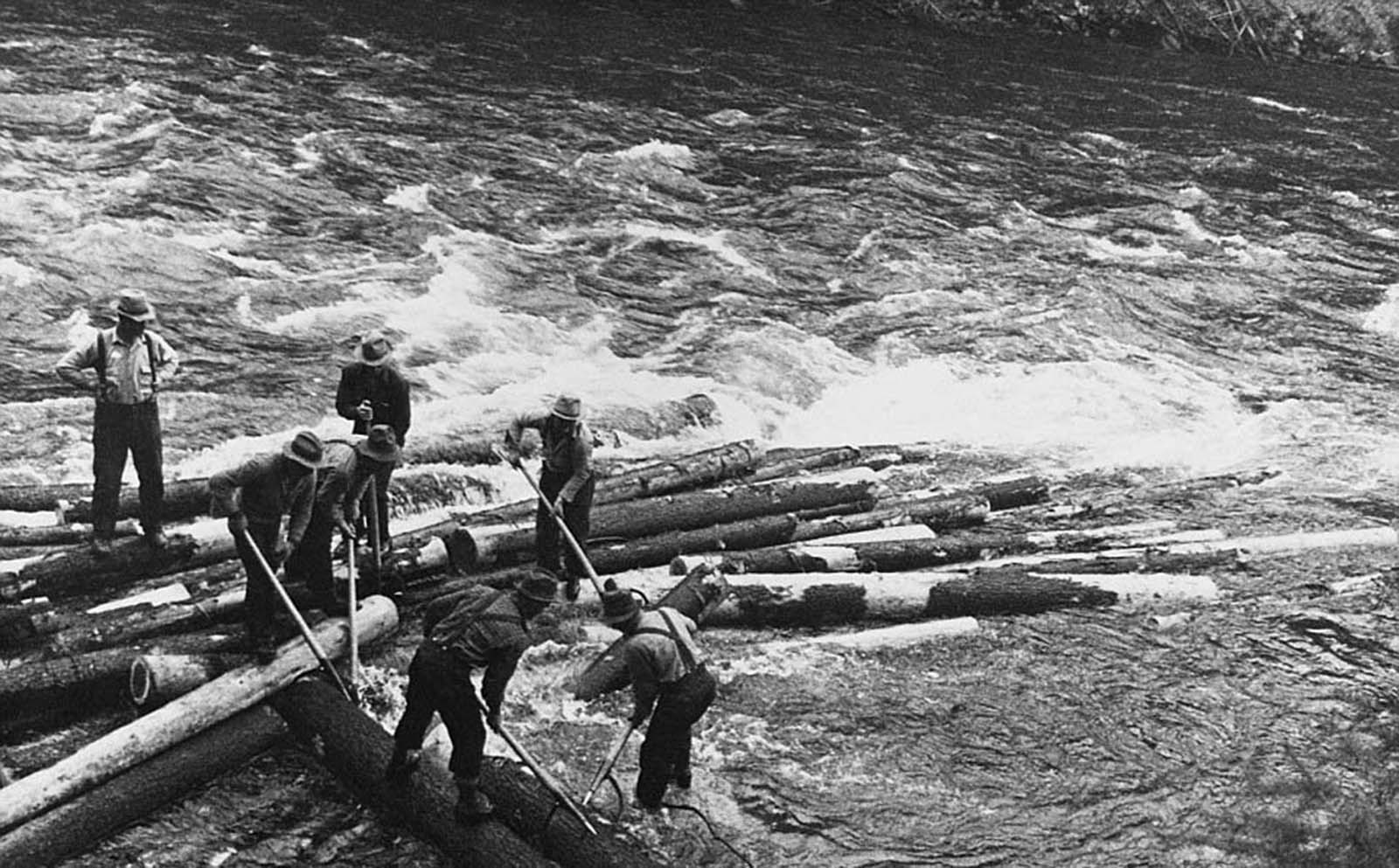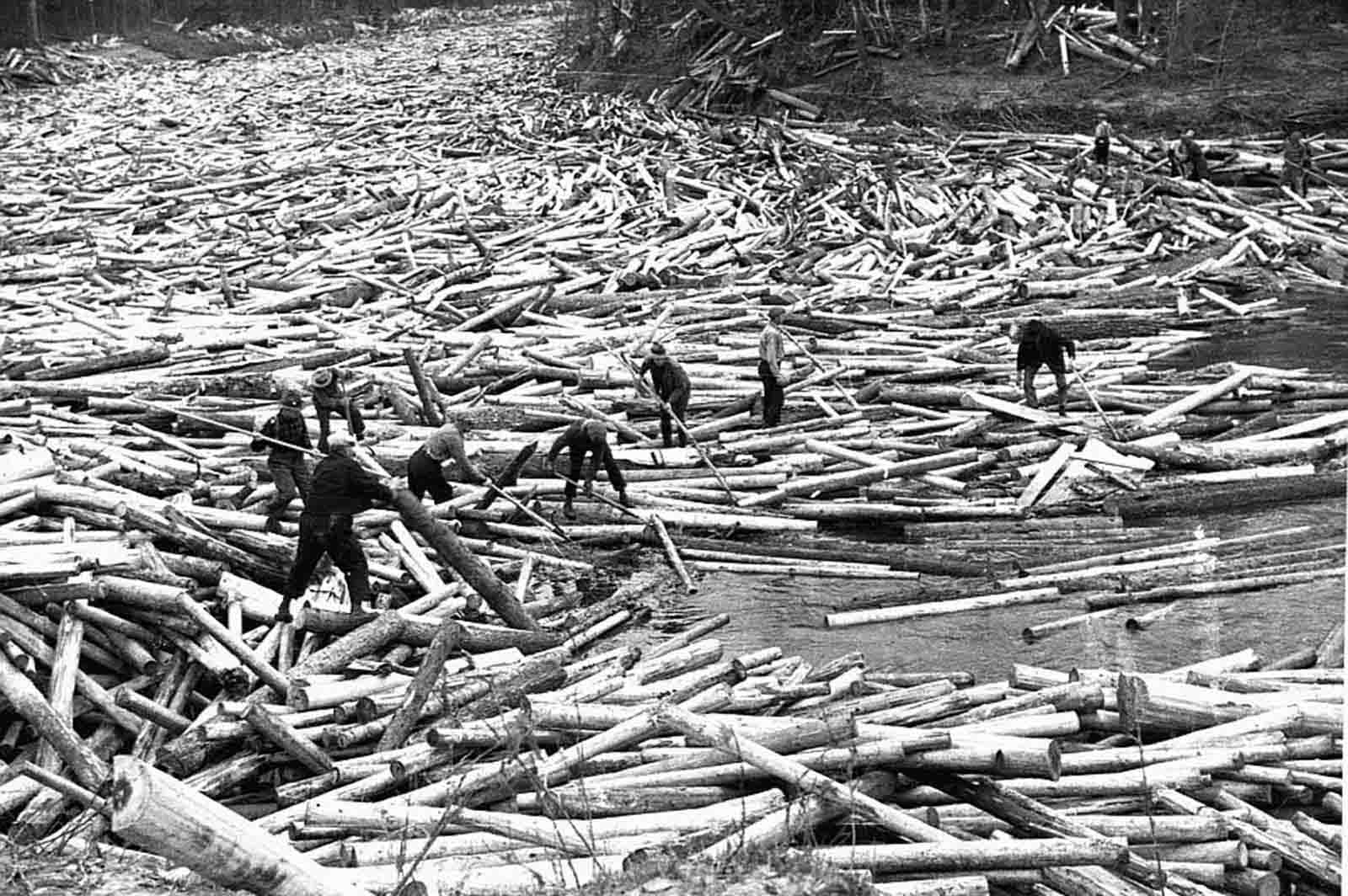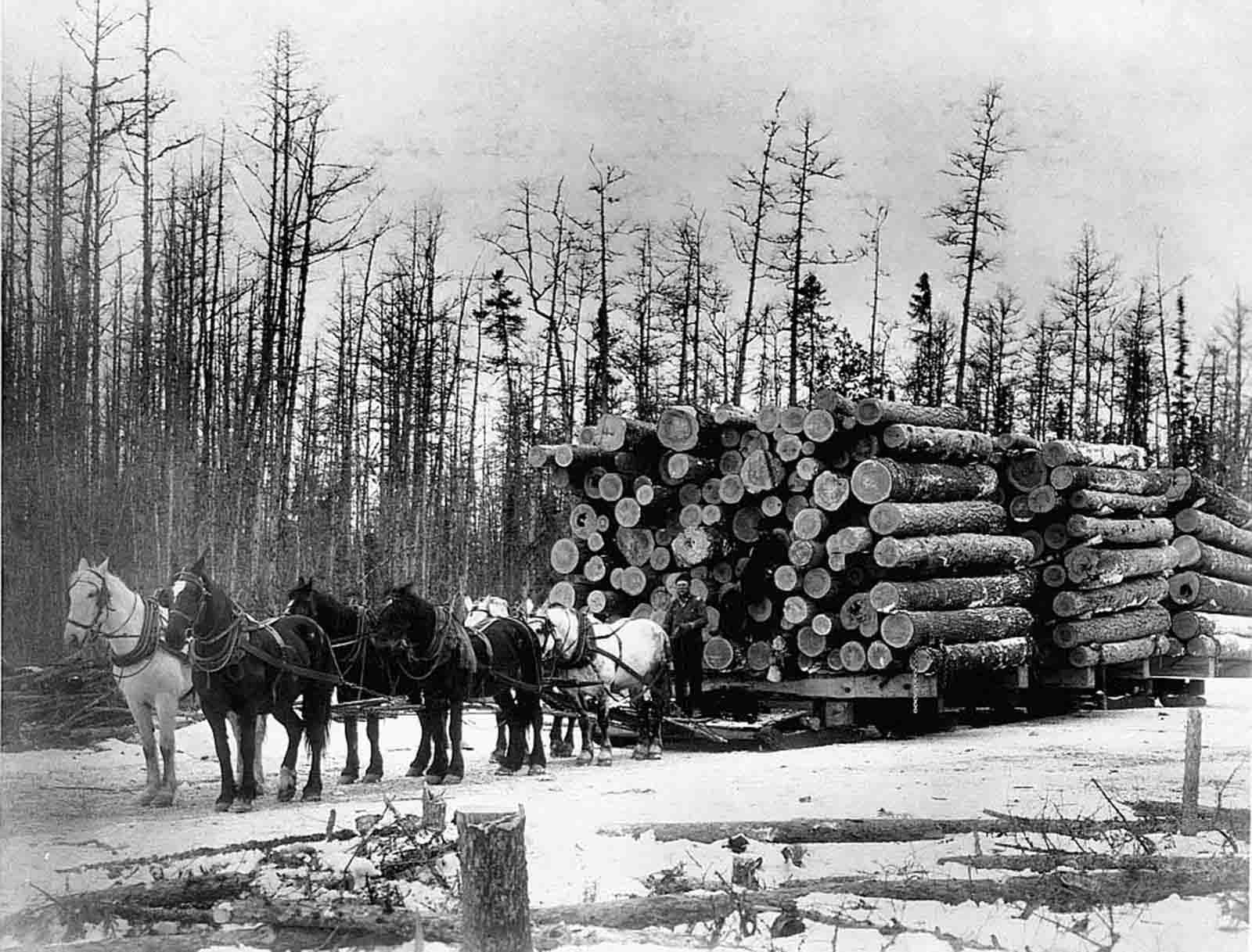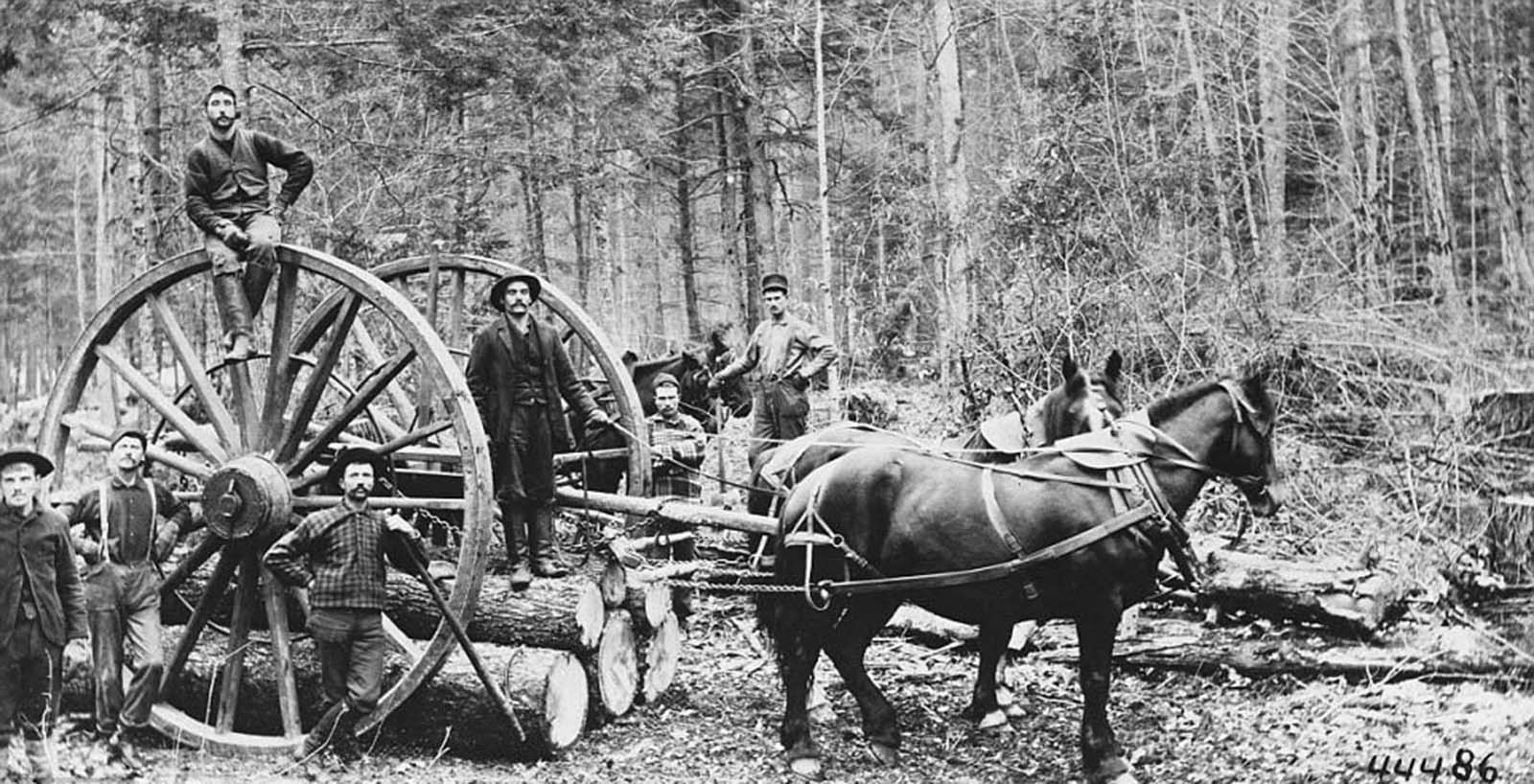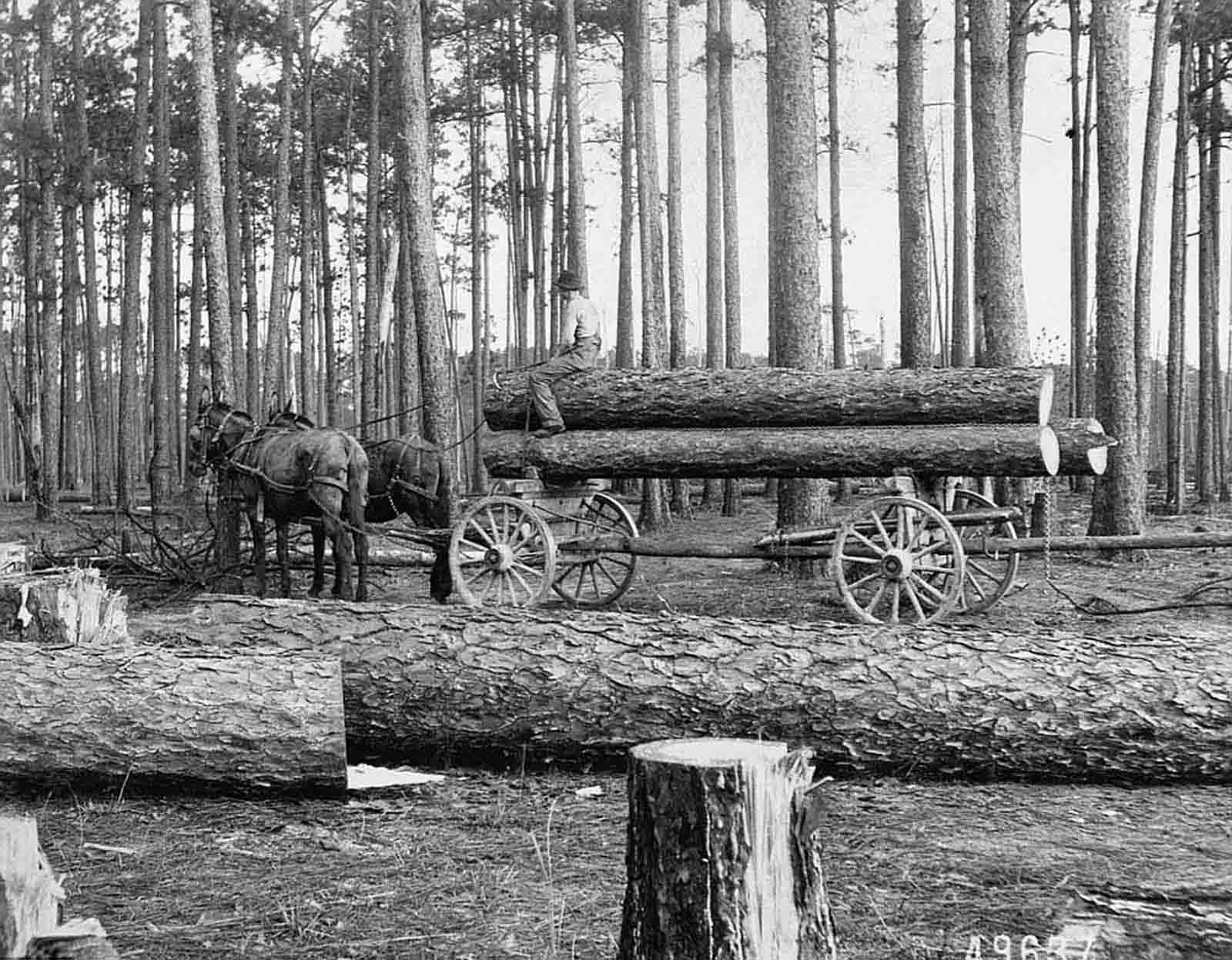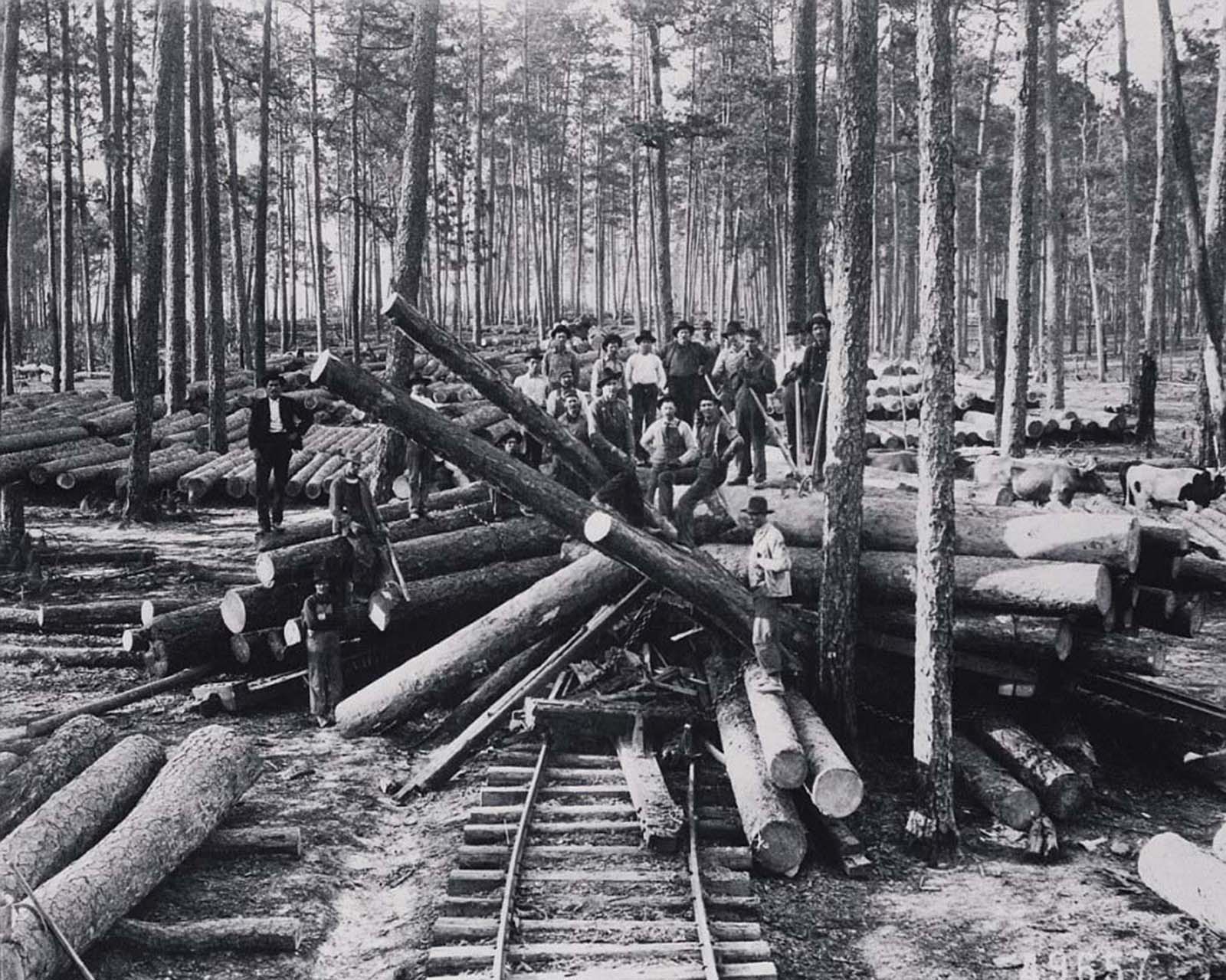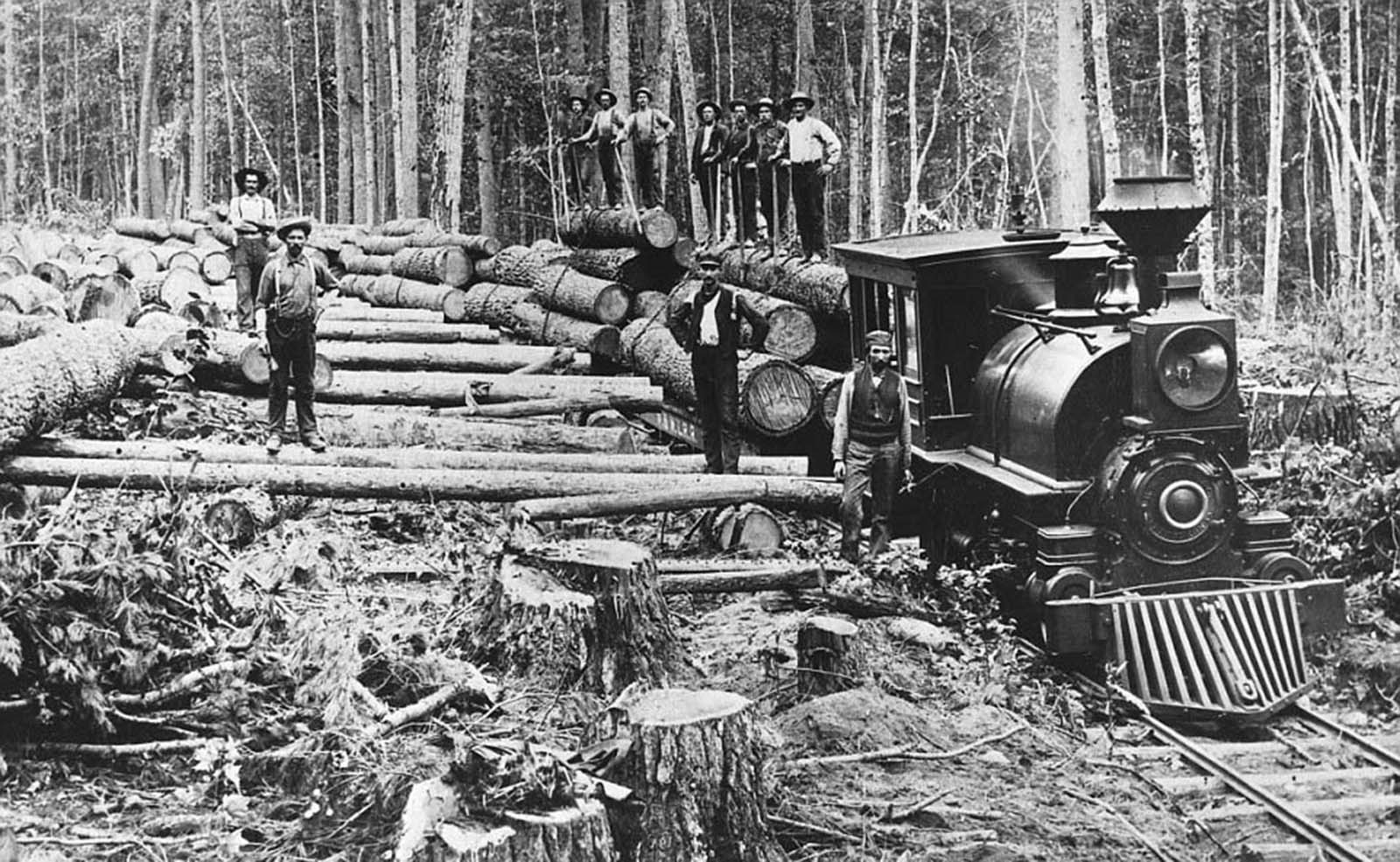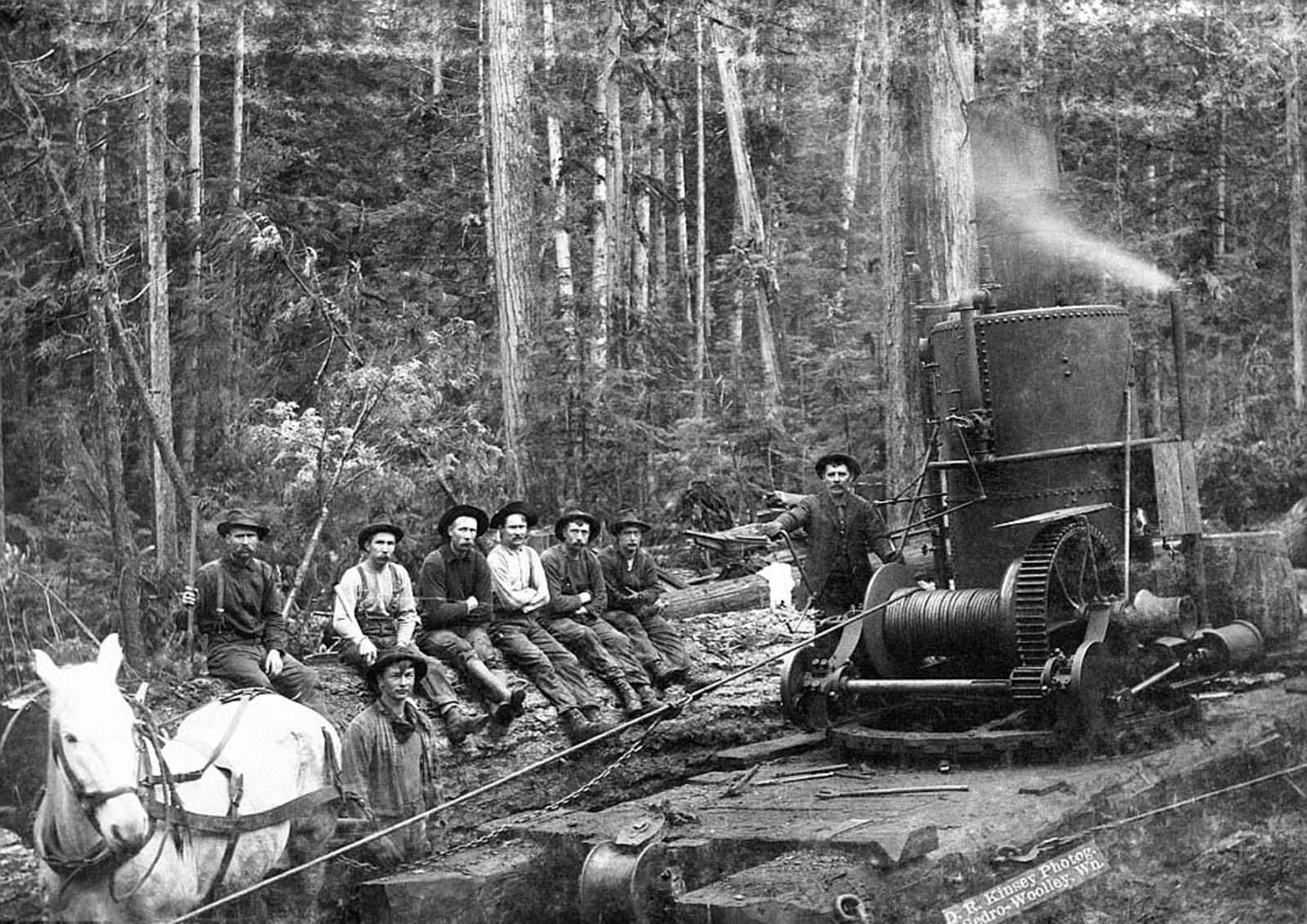Before motorized chainsaws and logging machinery, loggers used hand tools like axes and saws to fall trees. Living in primitive conditions and doing dangerous work made the work challenging, demanding, intermittent, and low-paying. Loggers typically lived in lumber camps and followed timber harvesting jobs as they opened up. As distasteful as the bedbugs they supported, they resided in shanties (or bunkhouses), whose odor was a mix of smoke, sweat, and drying clothes.
The lumberjack could be found anywhere there were forests to be harvested and a demand for wood, most likely in Scandinavia, Canada, and parts of the United States. Many lumberjacks in the U.S. were of Scandinavian ancestry, continuing the family tradition. Axes and crosscut saws were used by “fallers” to fell trees. When a tree was felled and delimbed, it was either cut into logs by a “bucker” or skidded or hauled to a railroad or river for transportation. The loggers typically used a springboard, which had notches in it that were slotted into the tree. The loggers would then cut a wedge into the tree with crosscut saws and axes. The direction of the cut was important when deciding where the tree would fall. Whistle punks sound a whistle to alert yarder operators to log movements. He was also responsible for ensuring safety. Because whistle punks had to be alert and think fast, the safety of others depended on them. In the landing area of the logging site, the high climber (also known as a tree topper) would climb a tall tree using iron climbing hooks and ropes, cutting off tree limbs as he rose, cutting off the tree’s top, and attaching pulleys and rigging to the tree. Then logs could be skidded into the landing using it as a spar. The choker setters attached steel cables (or chokers) to downed logs so the yarder could drag them into the landing. Once the logs were at the landing, the chasers removed the chokers. A logger setter or chaser was often an entry-level position on a logging crew. More experienced loggers would move up to places like yarder operators and high climbers or supervisory roles such as hook tenders. Fallers and buckers’ felling of trees and bucking are specialized jobs, despite the common perception that all loggers cut trees.
The profession and culture of the lumberjacks began to disappear when machinery, vehicles, and motorized tools were invented. Today, lumber workers are called loggers. Below are some stunning historical photos of lumberjacks and loggers from the early 1900s.


